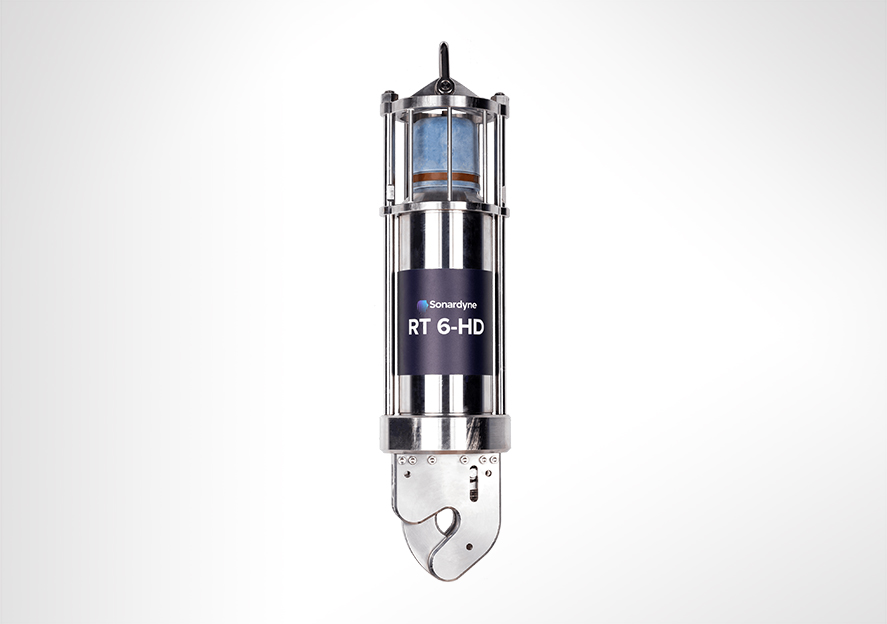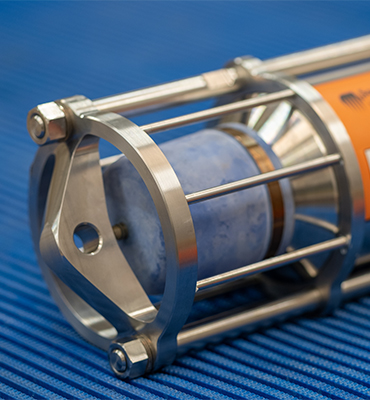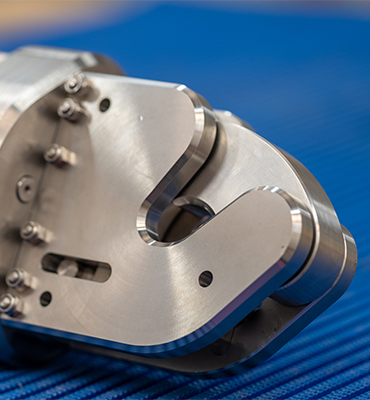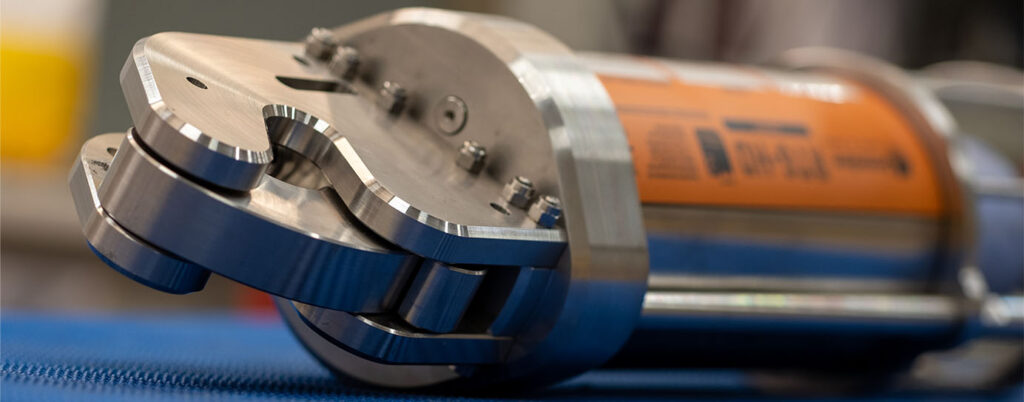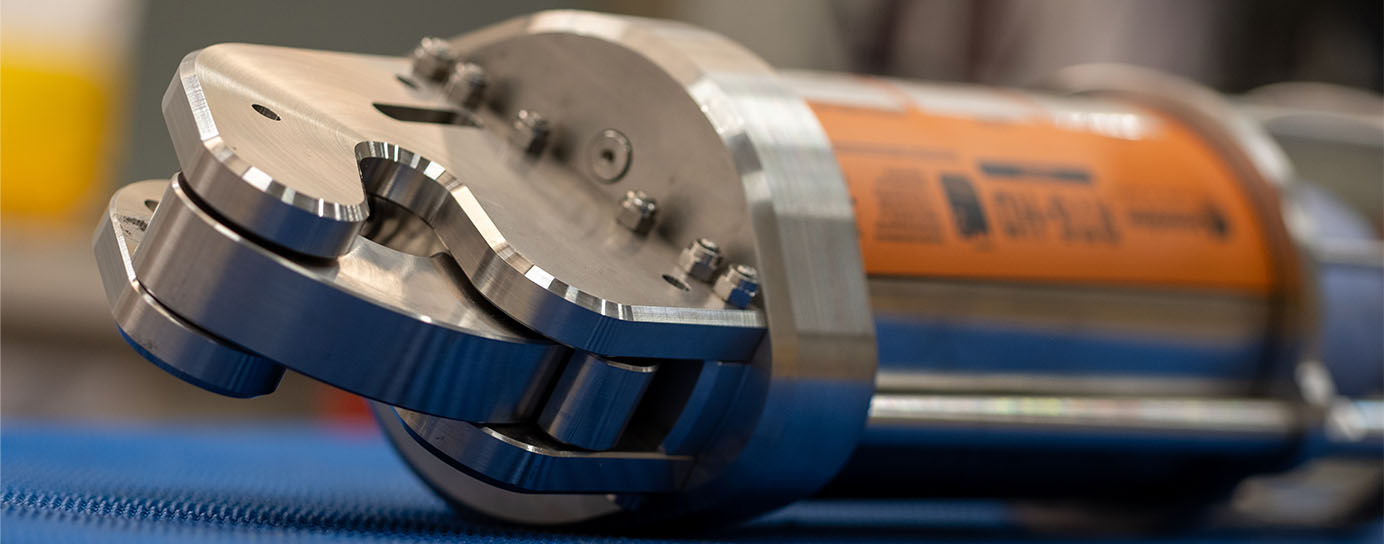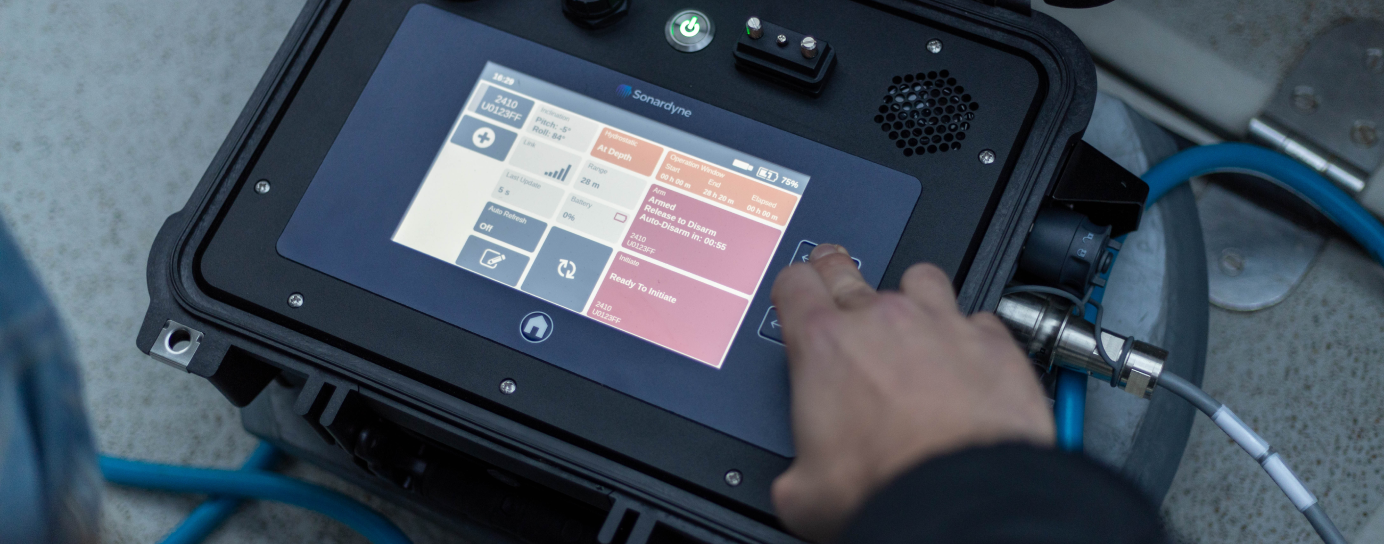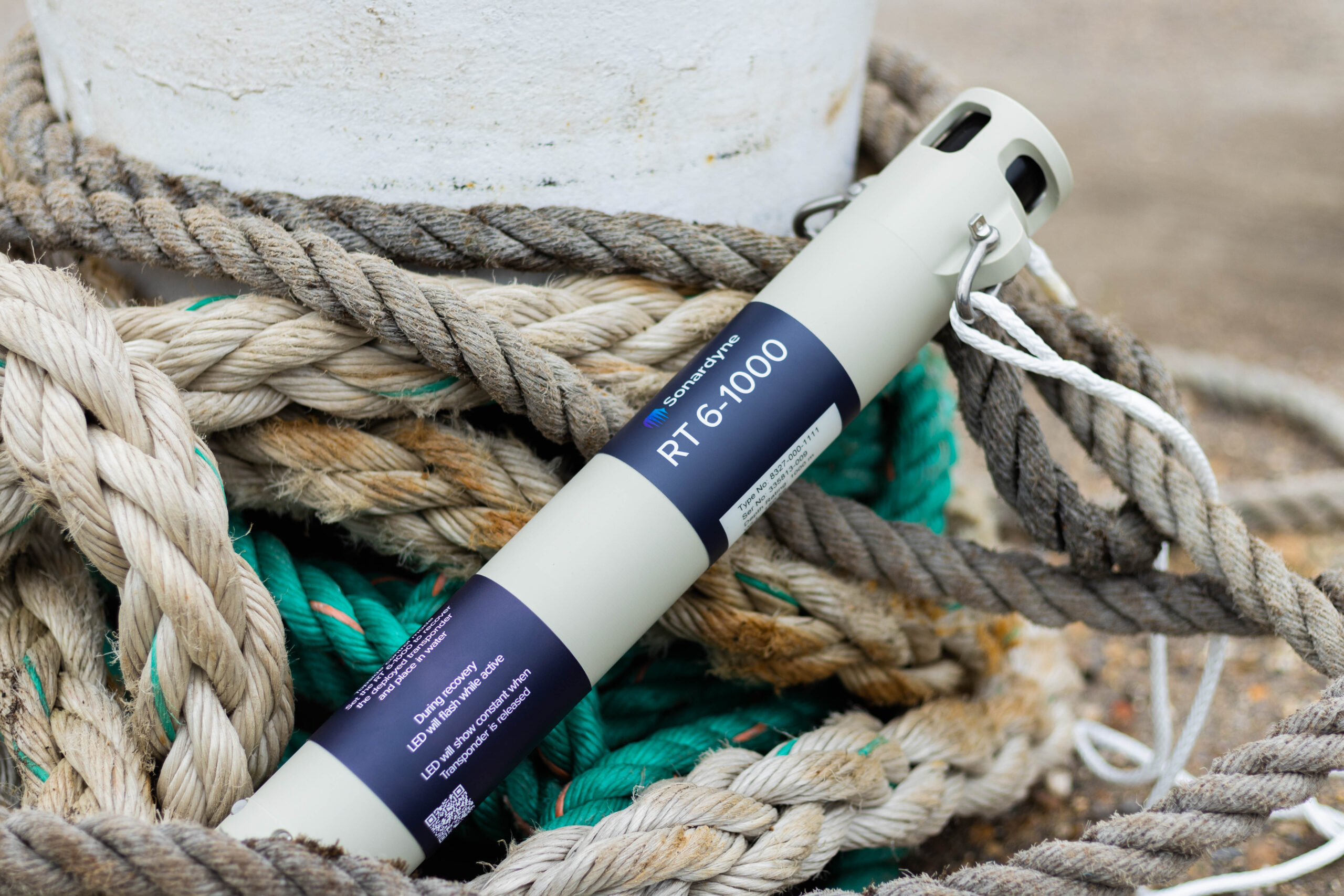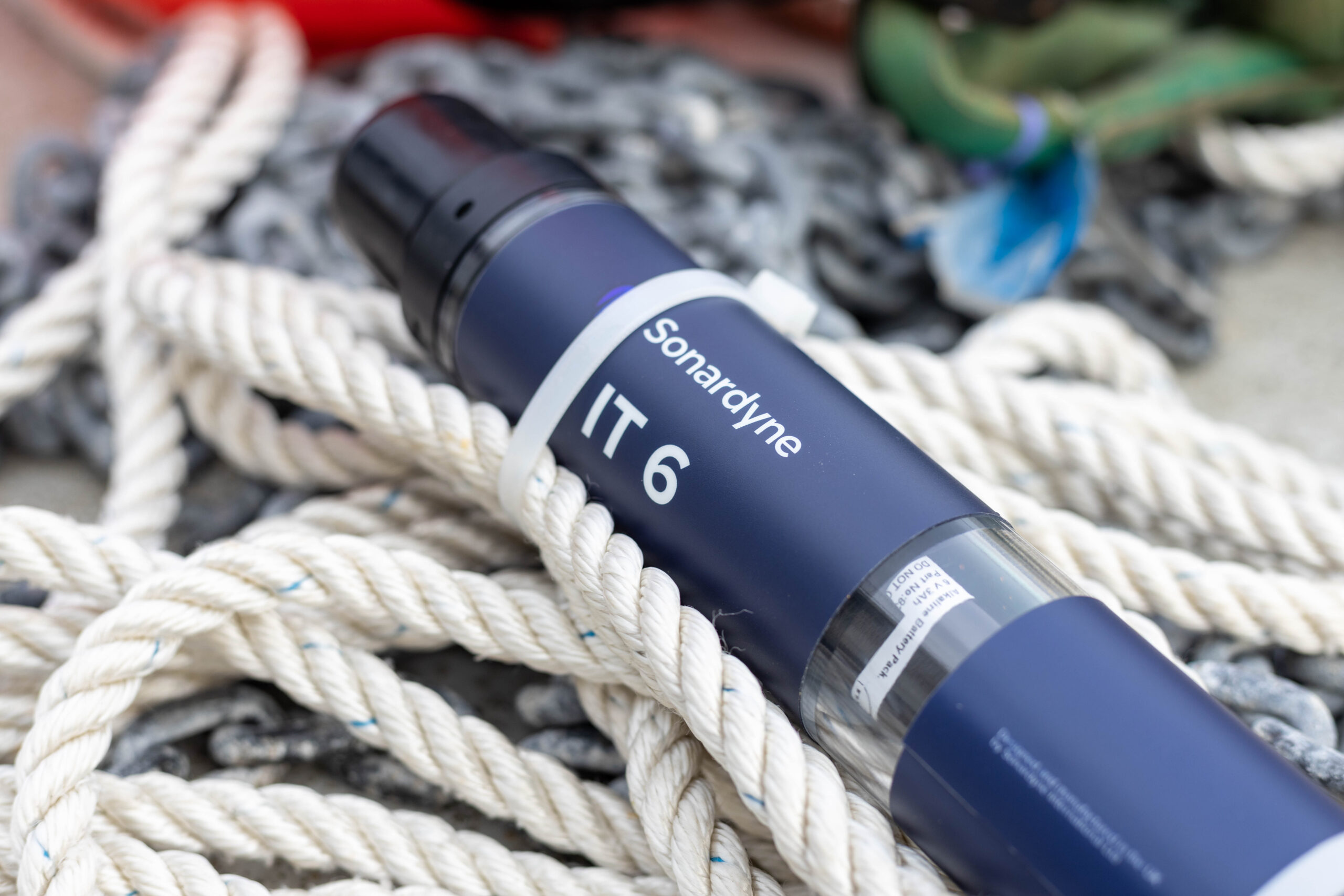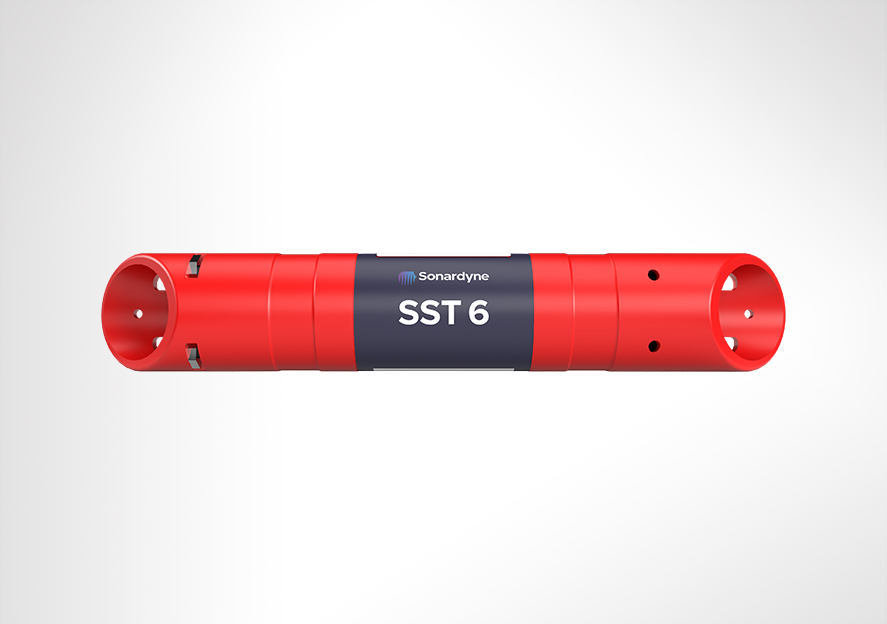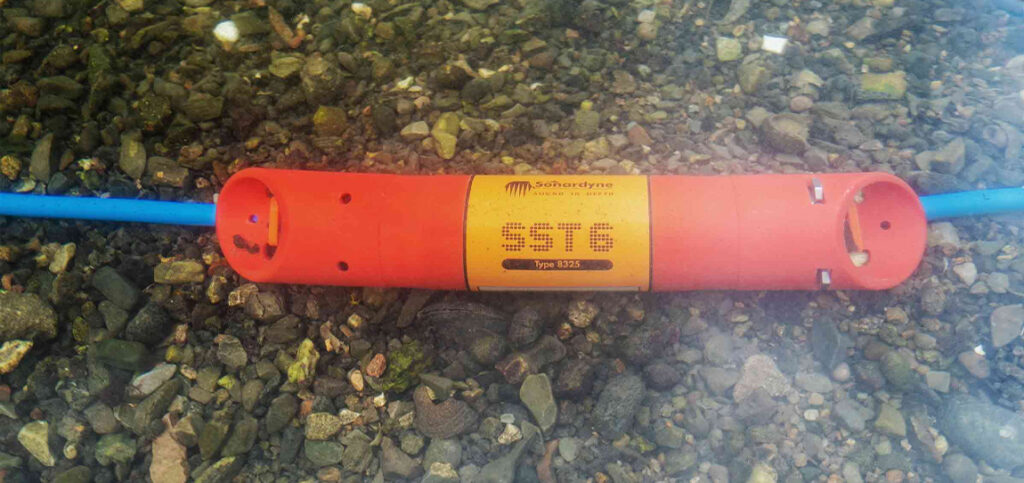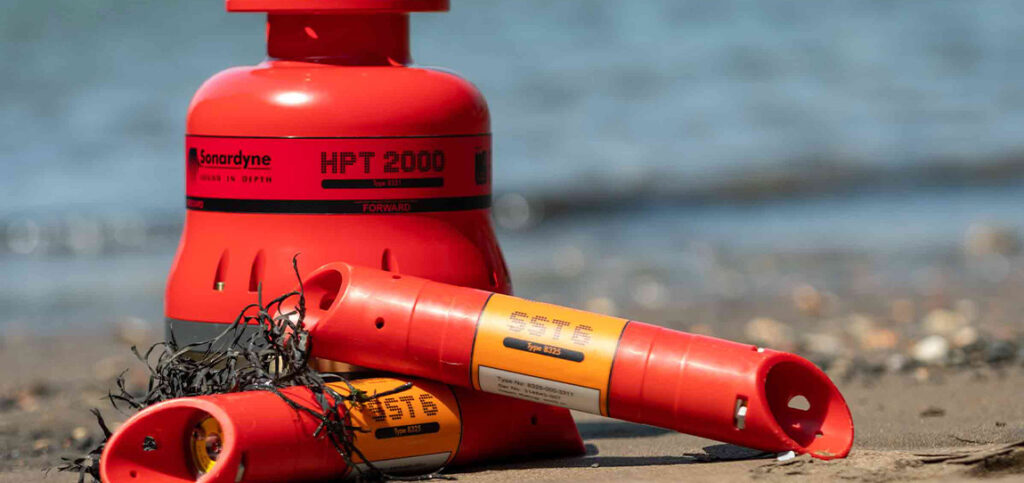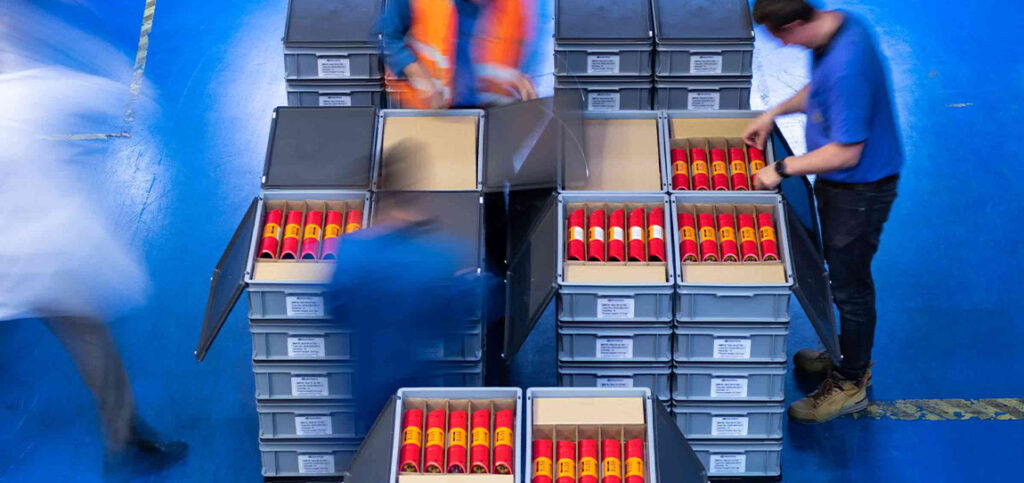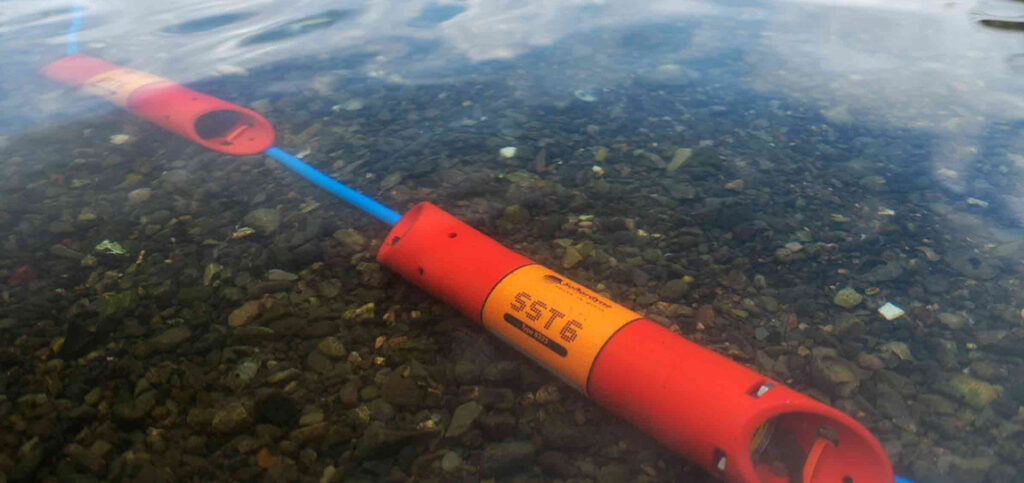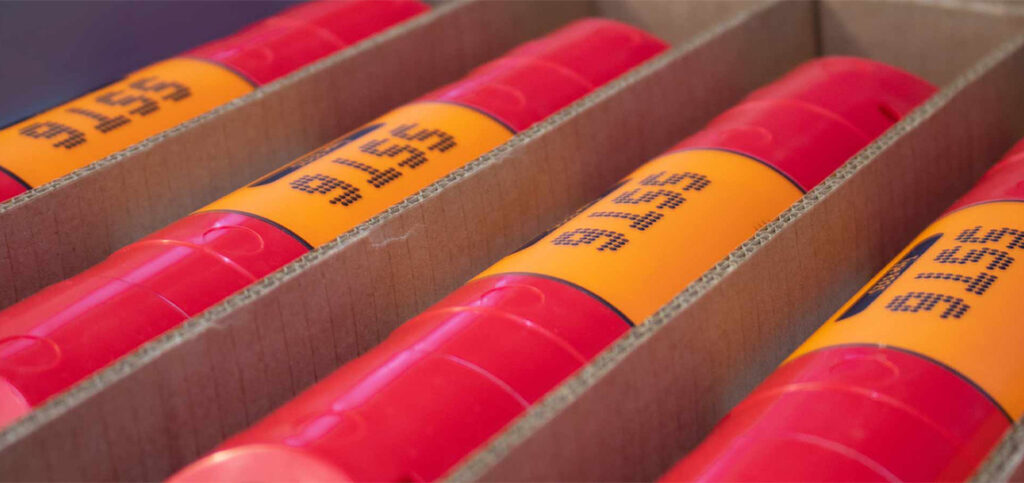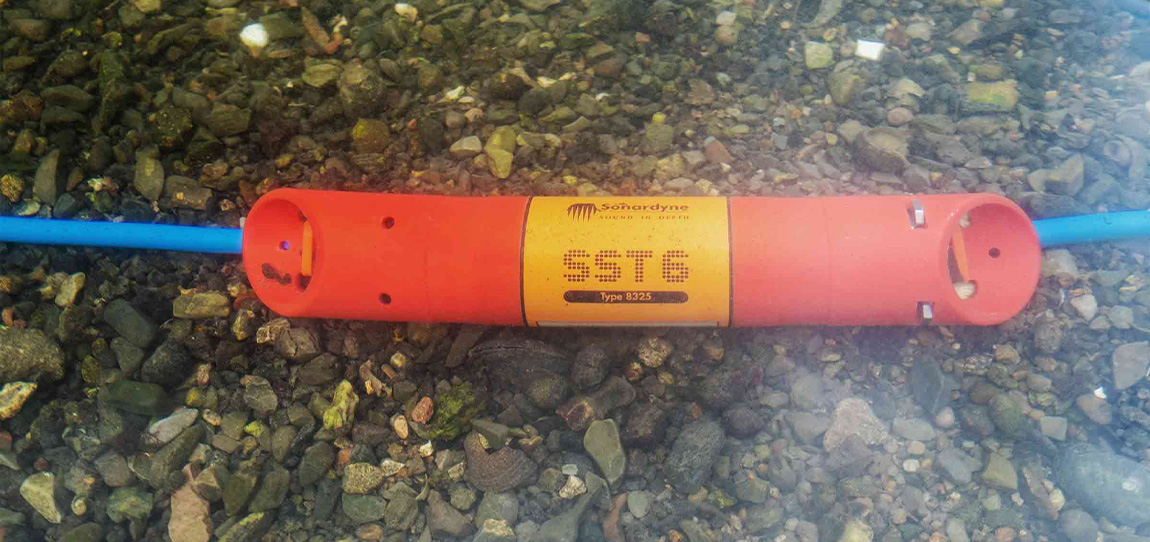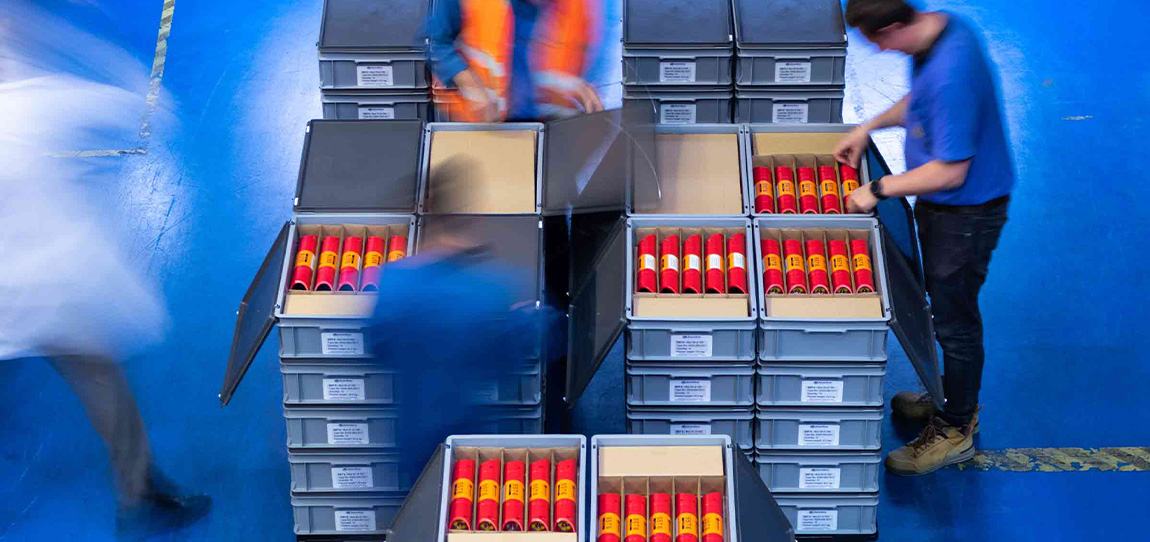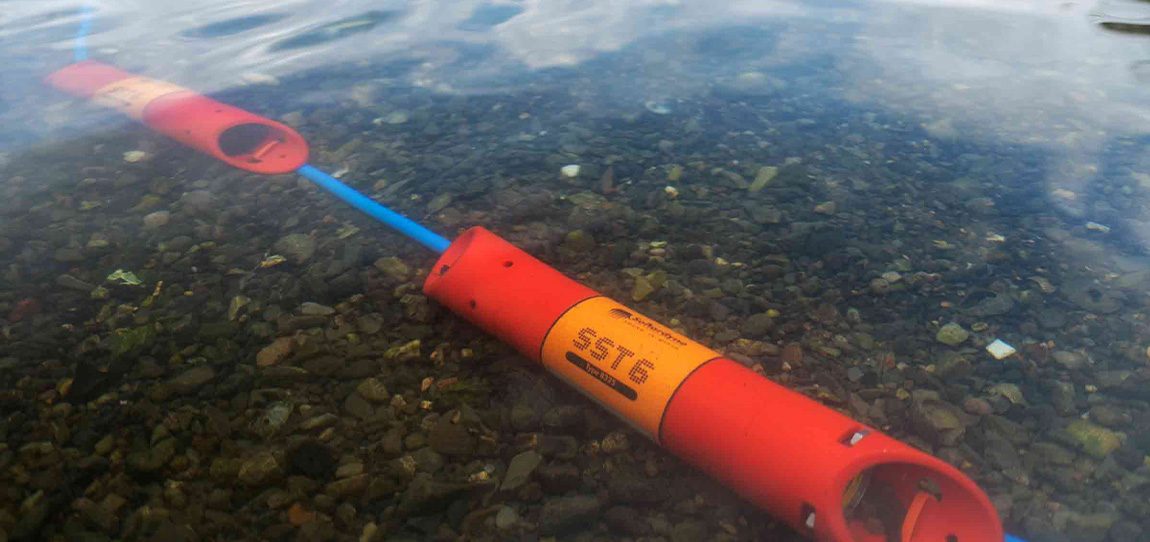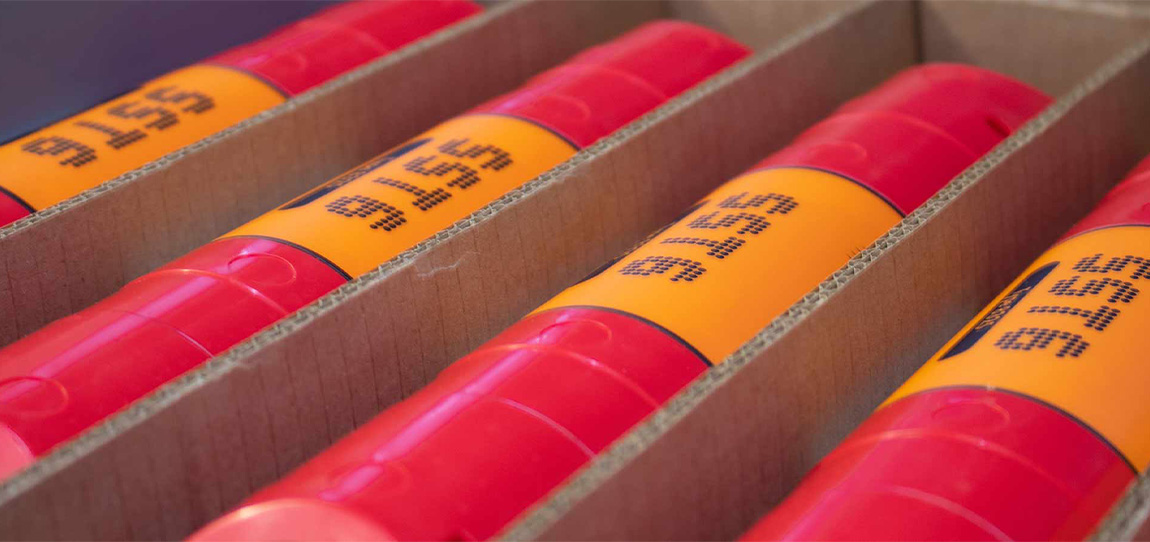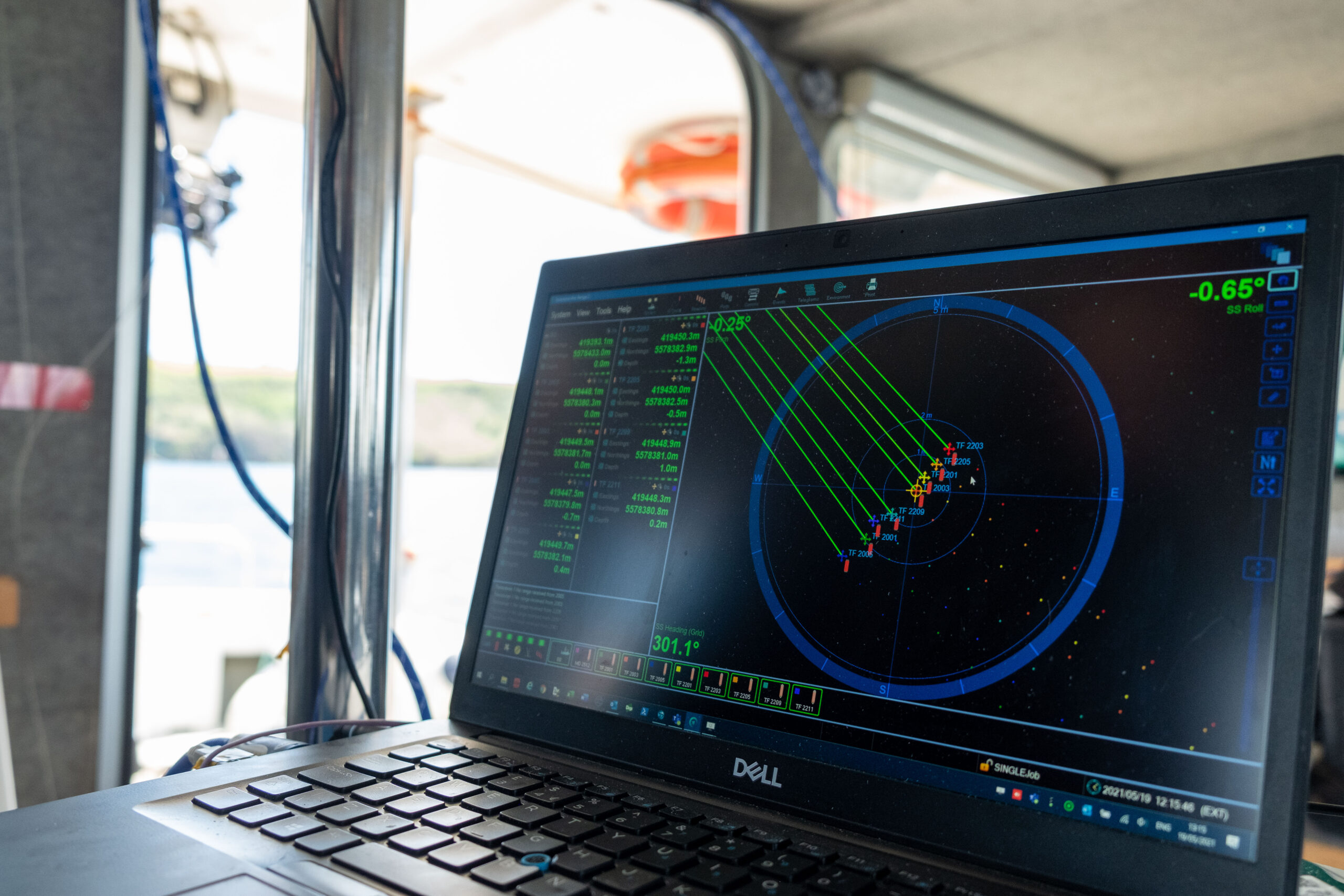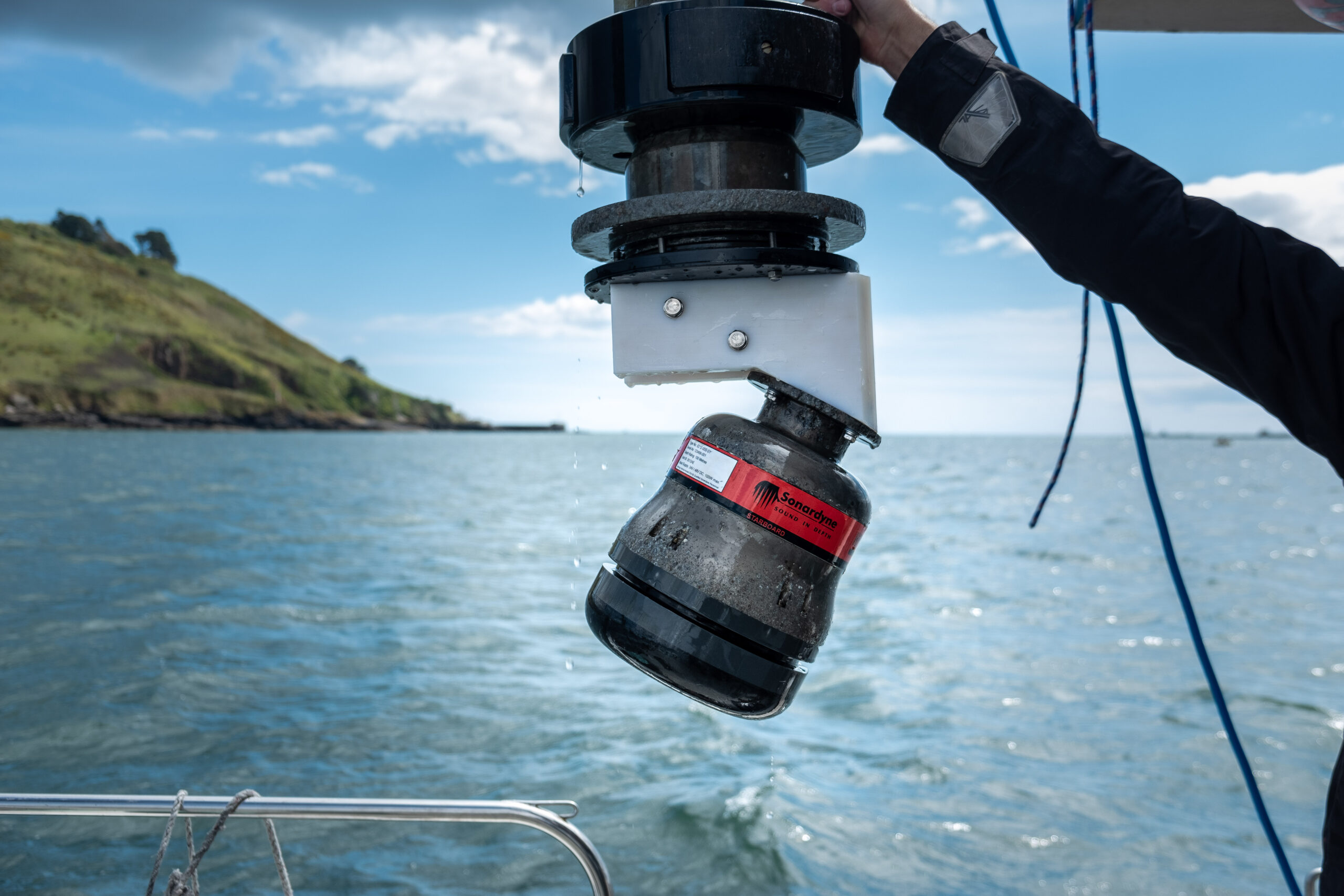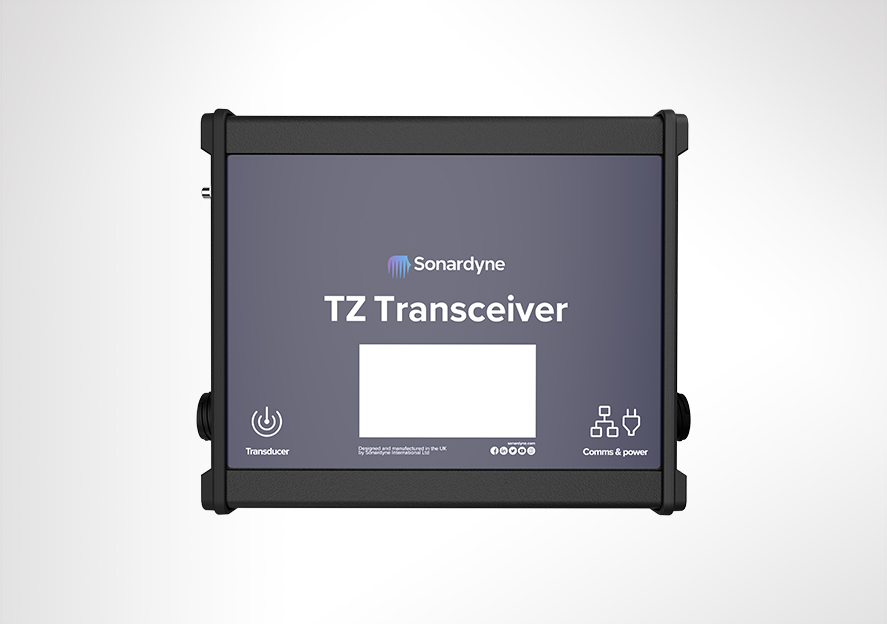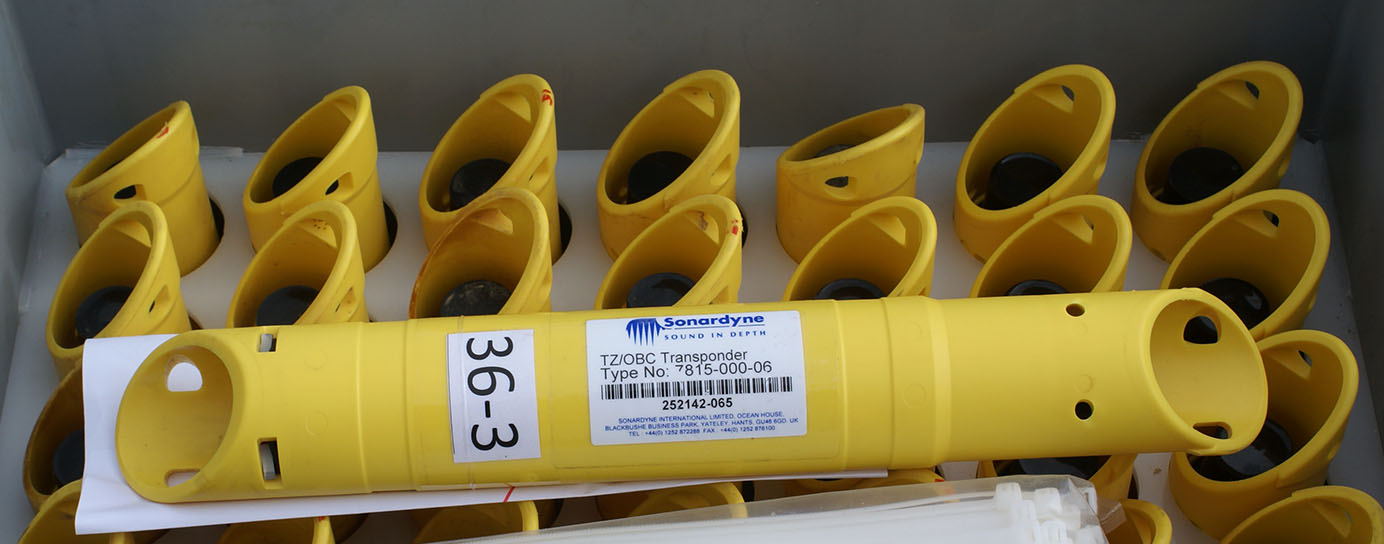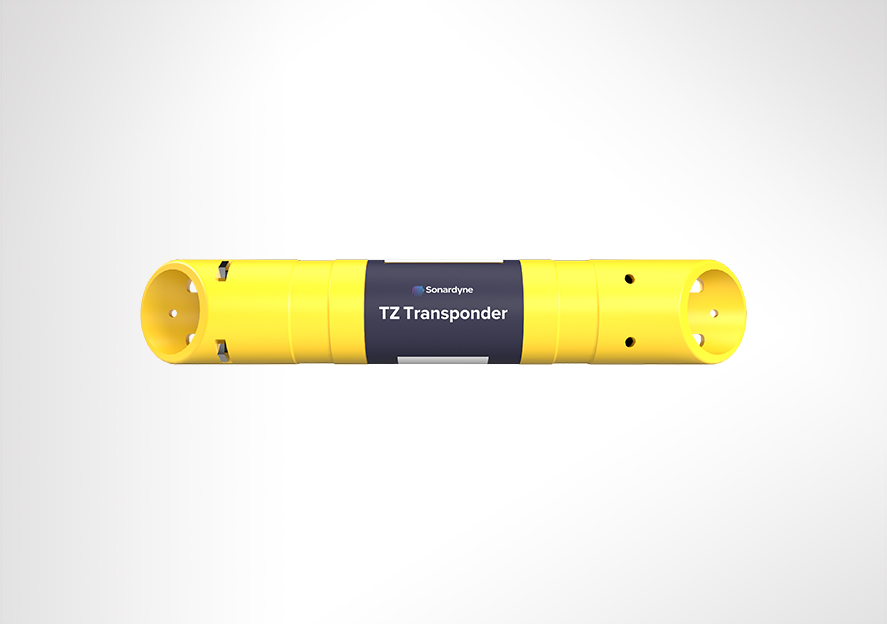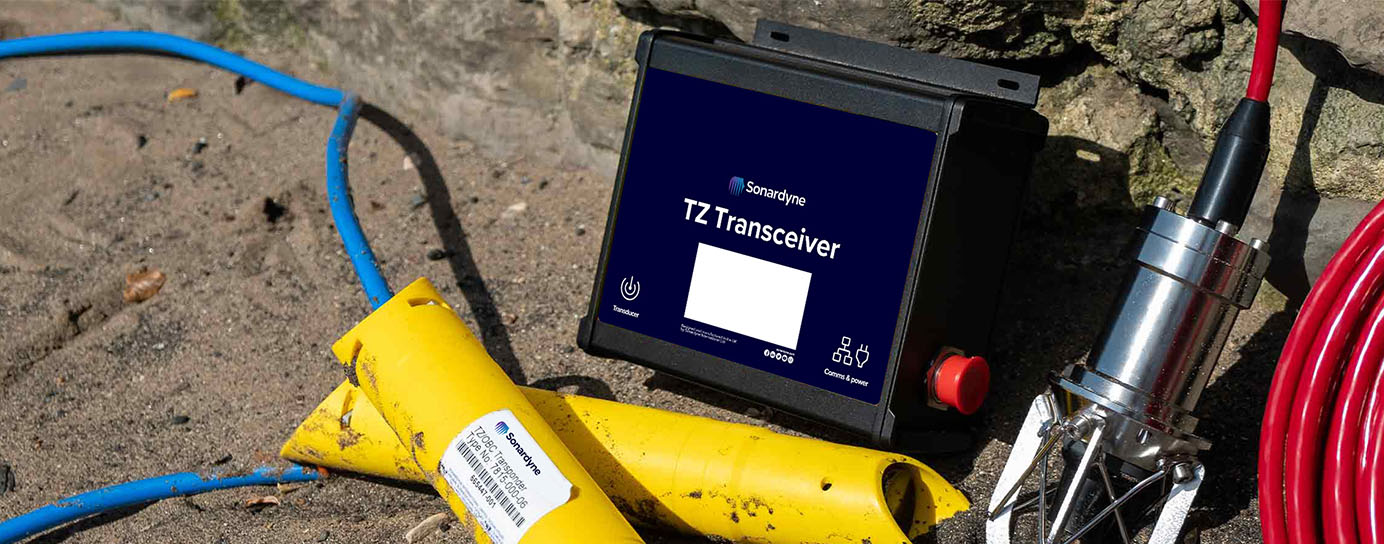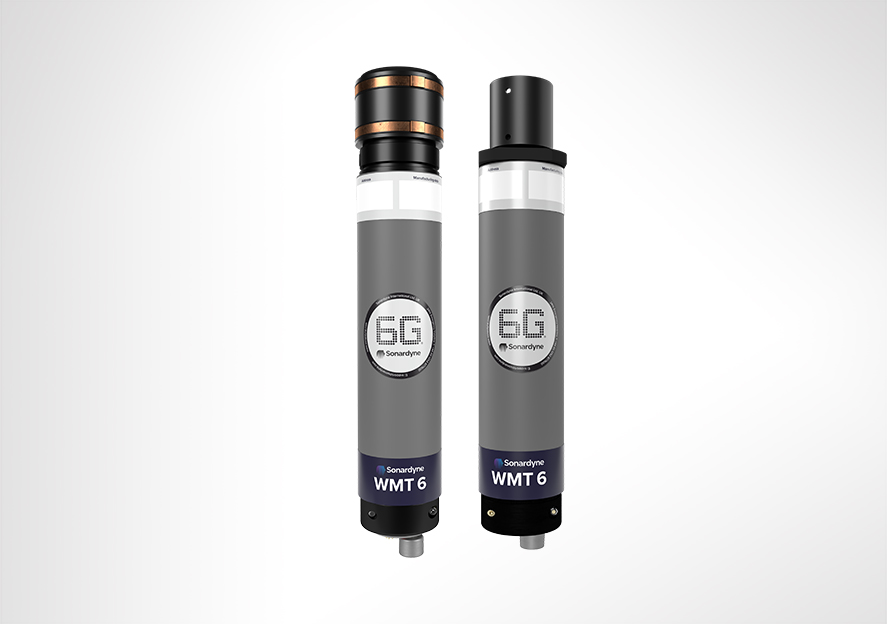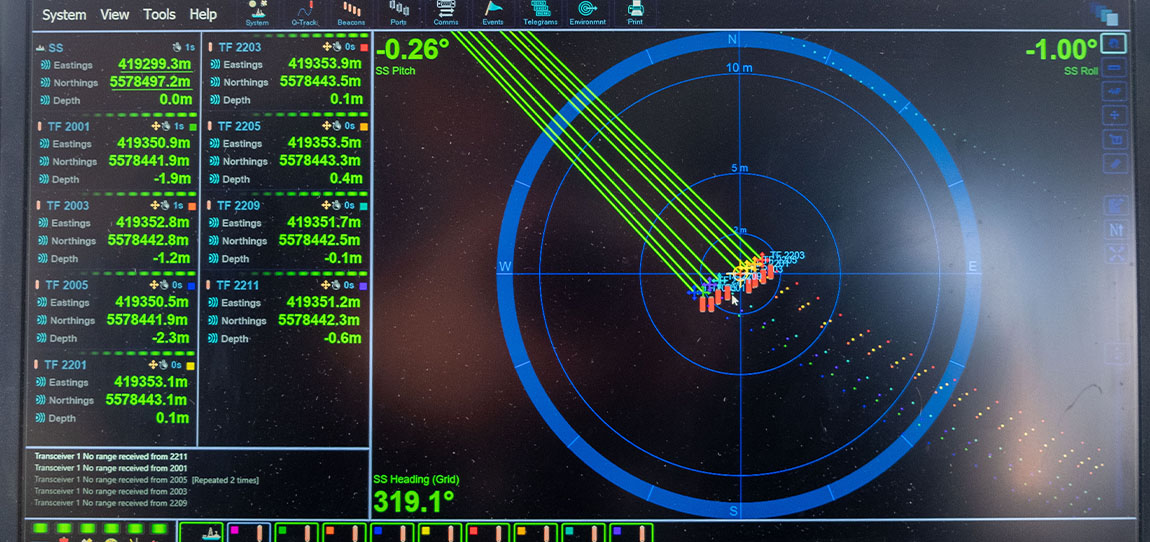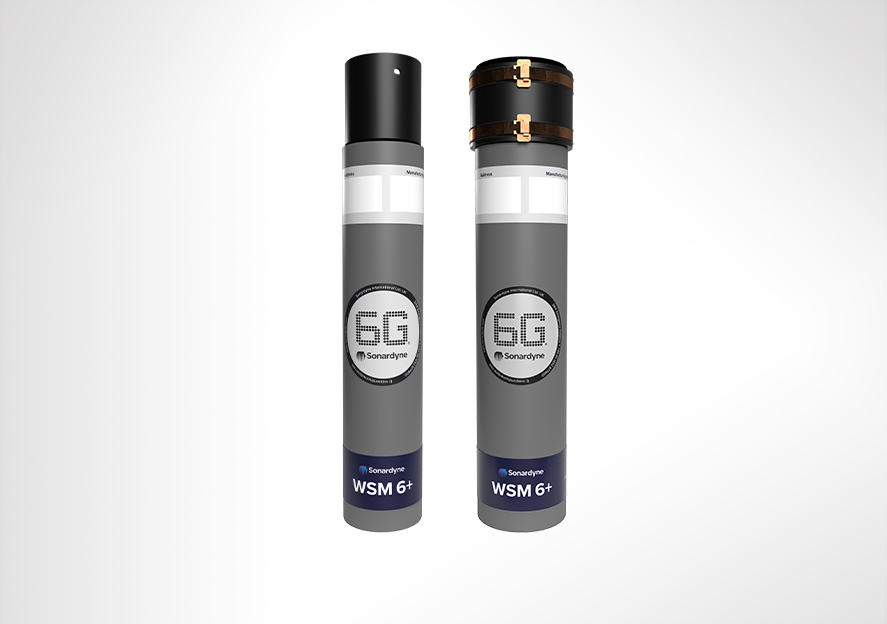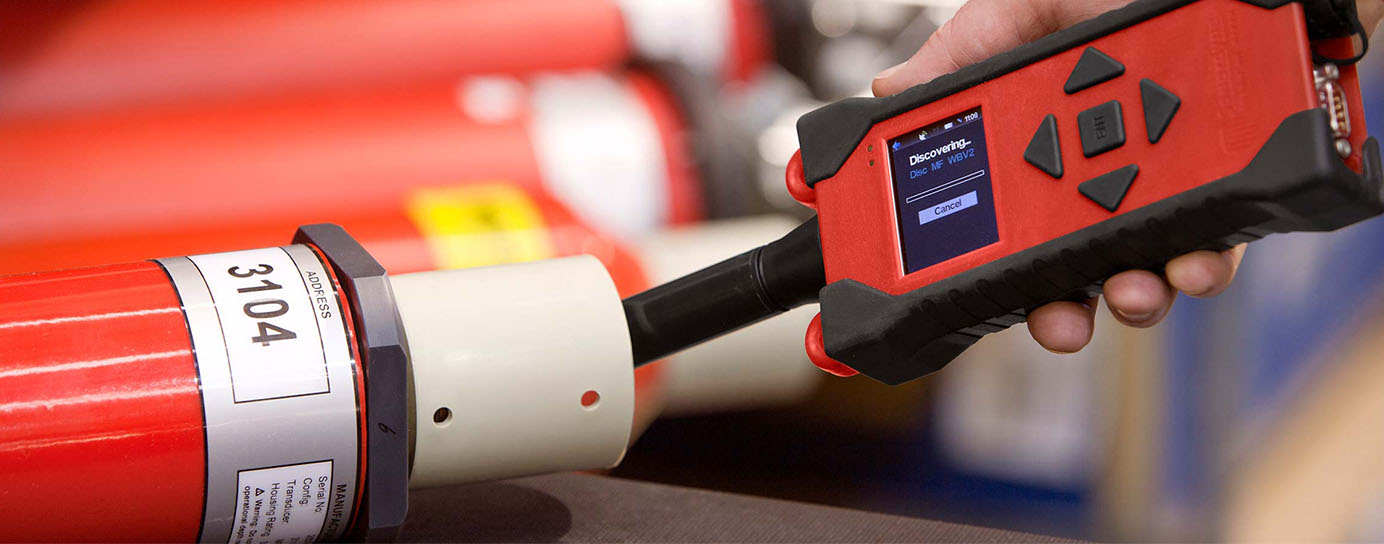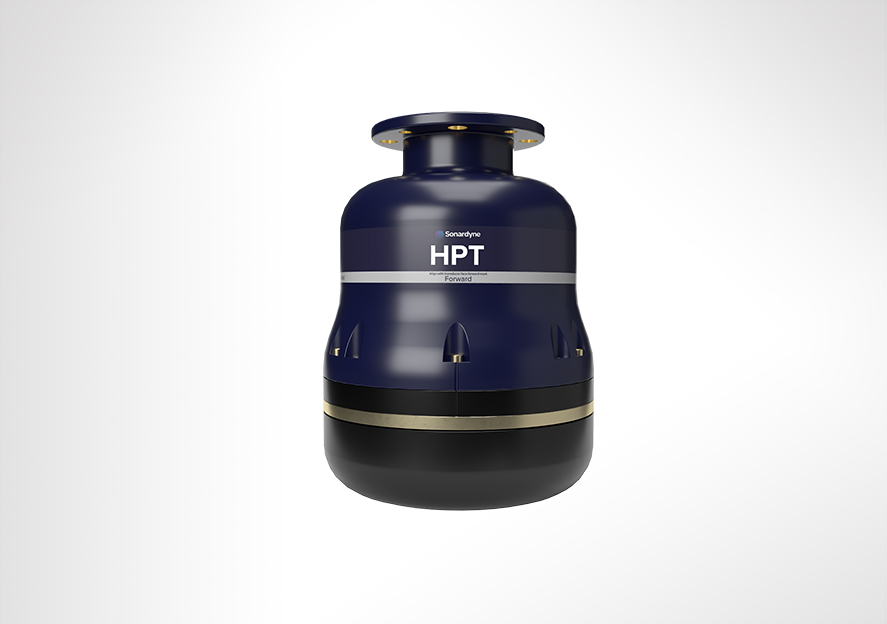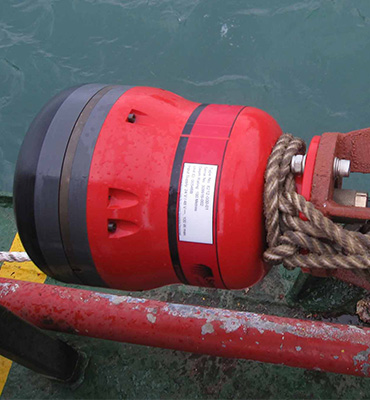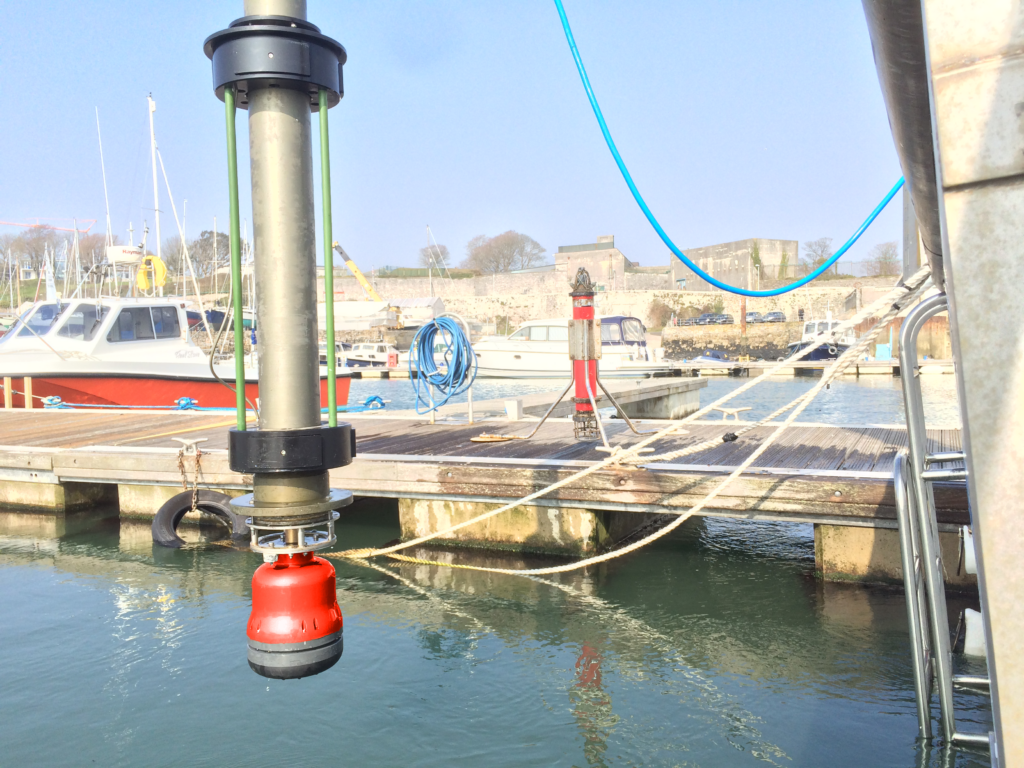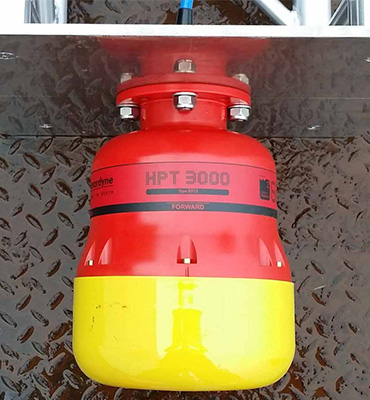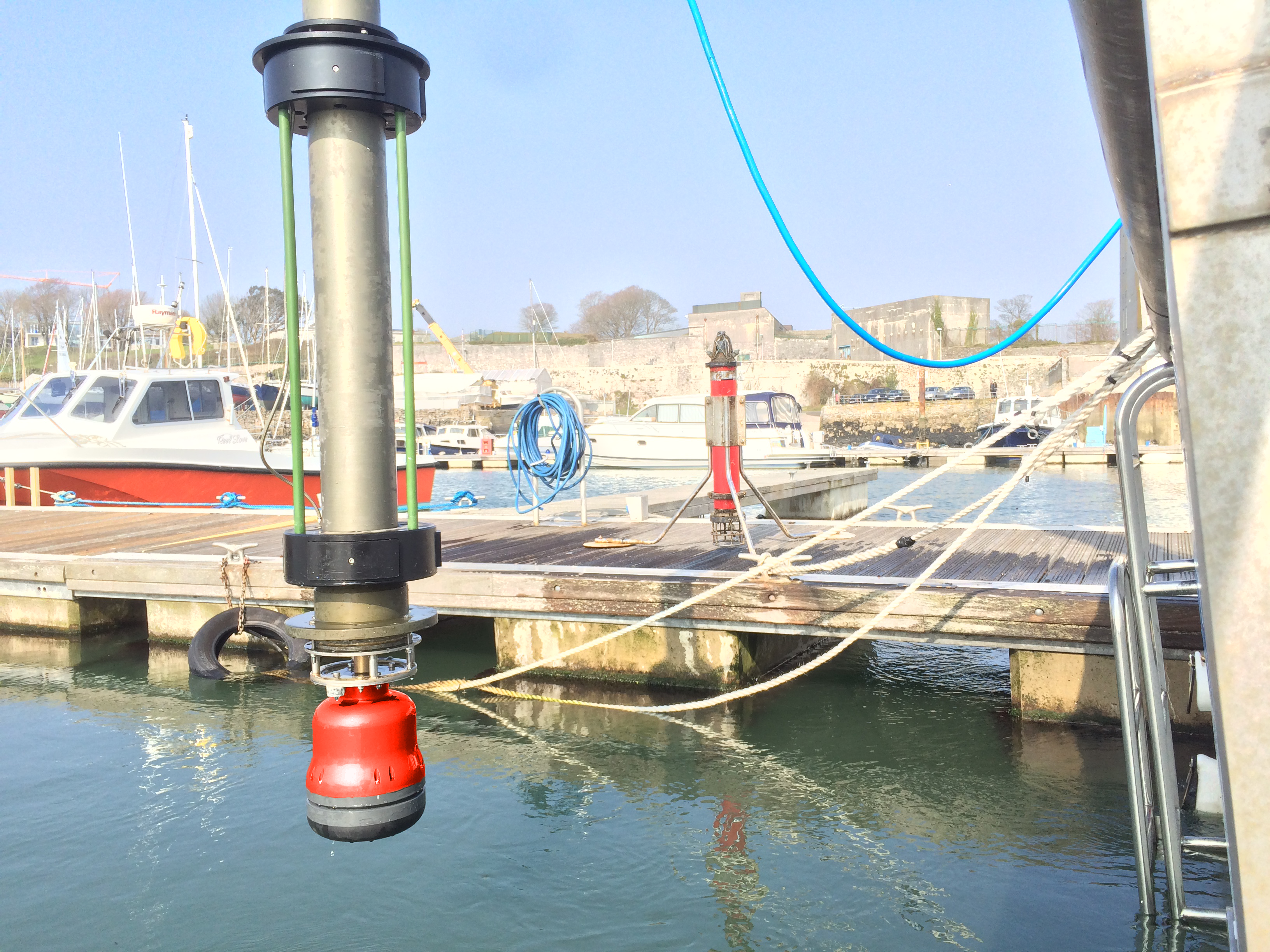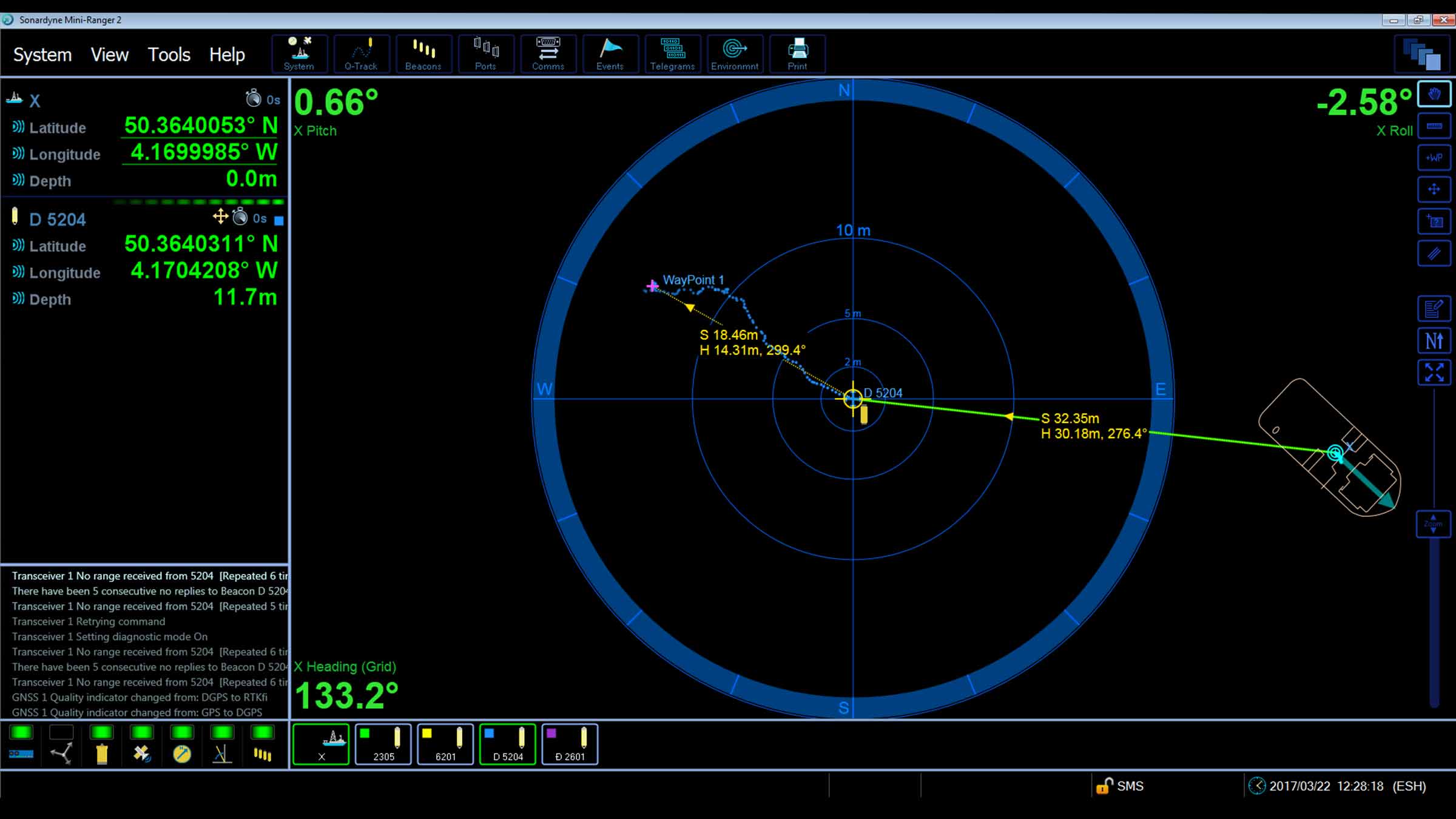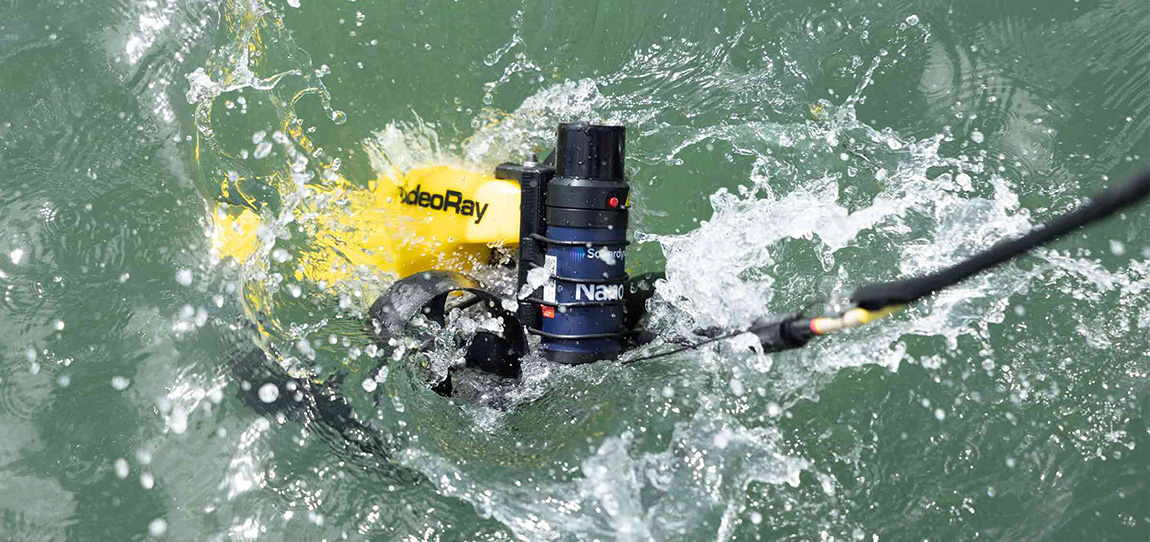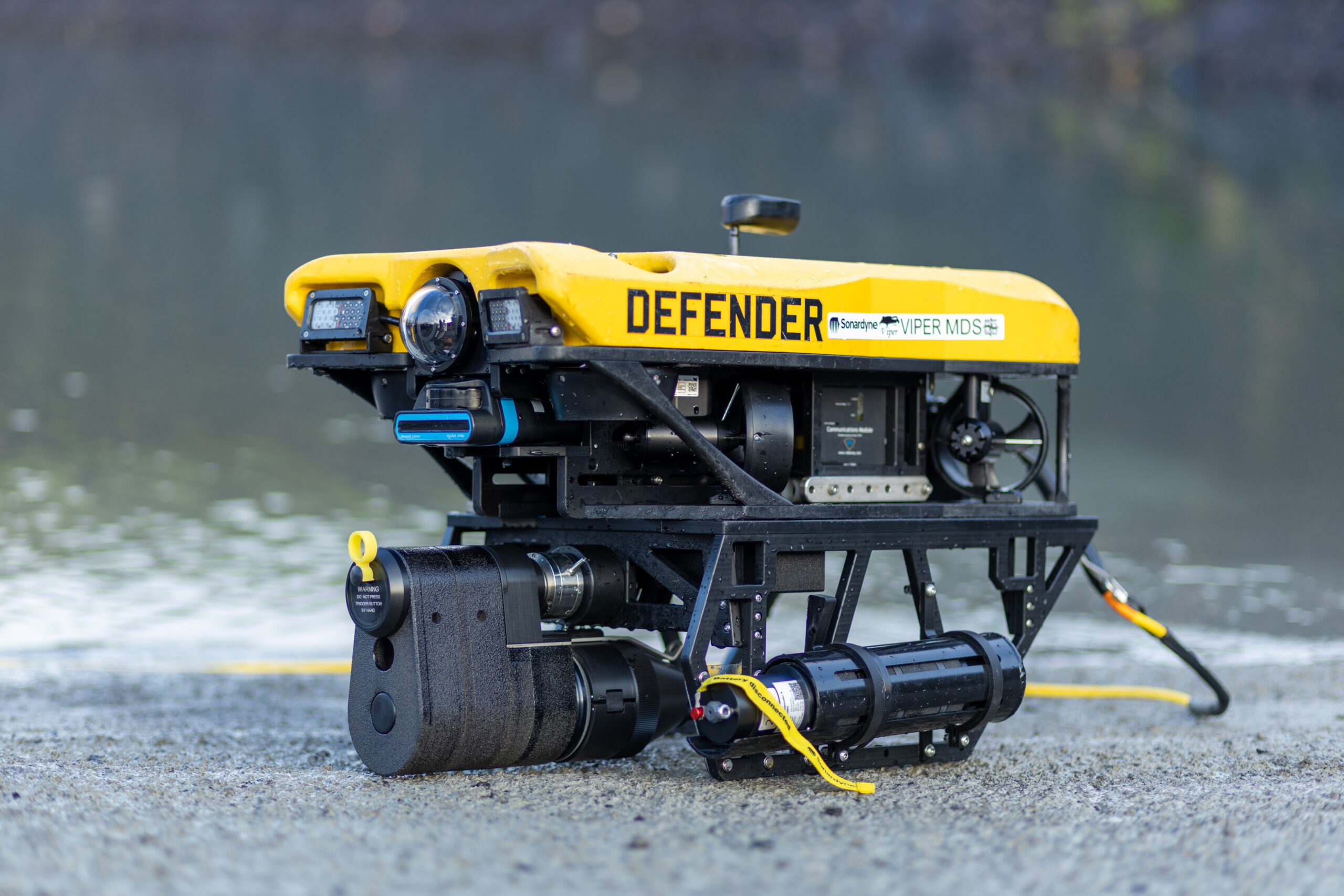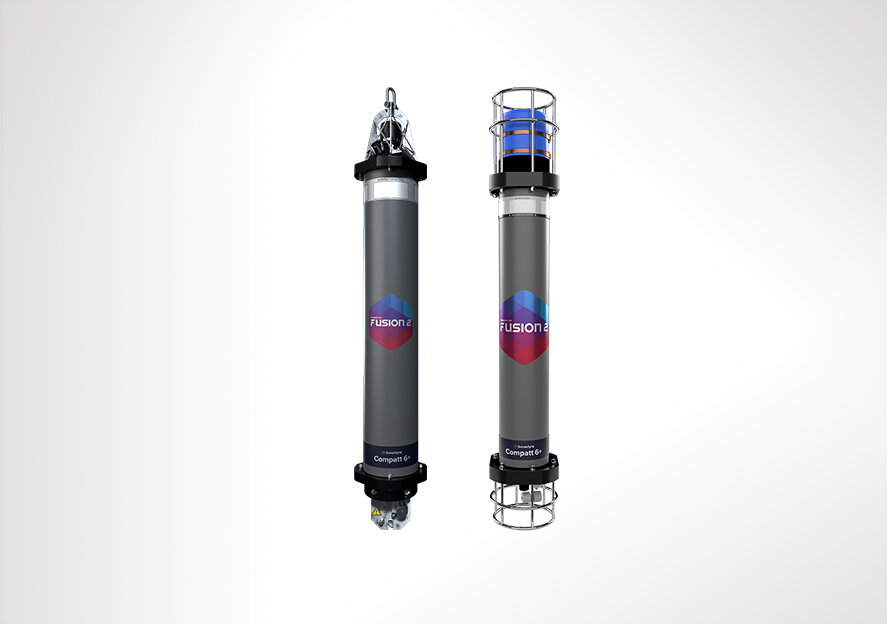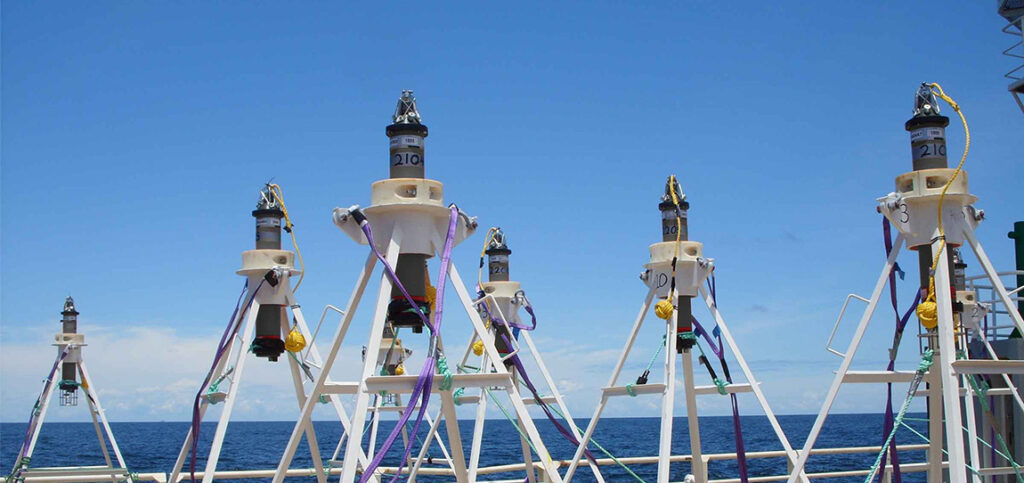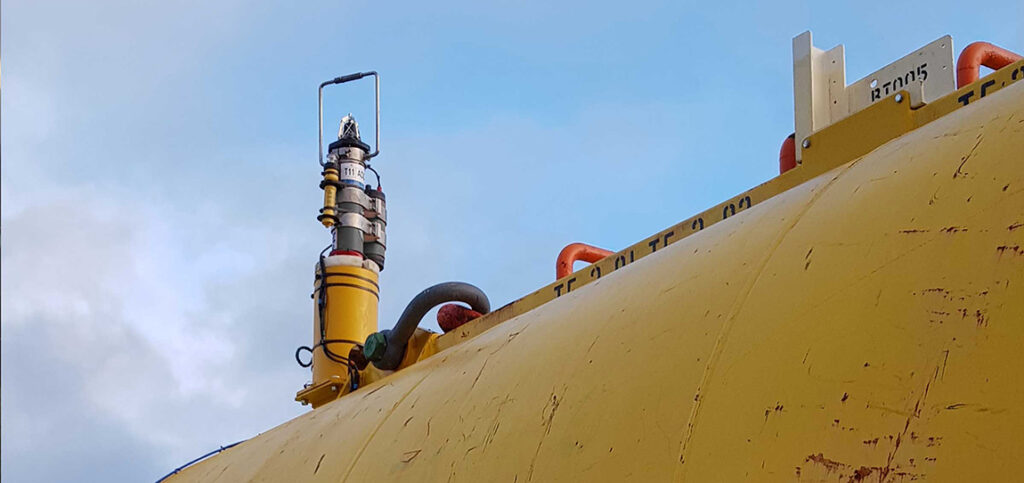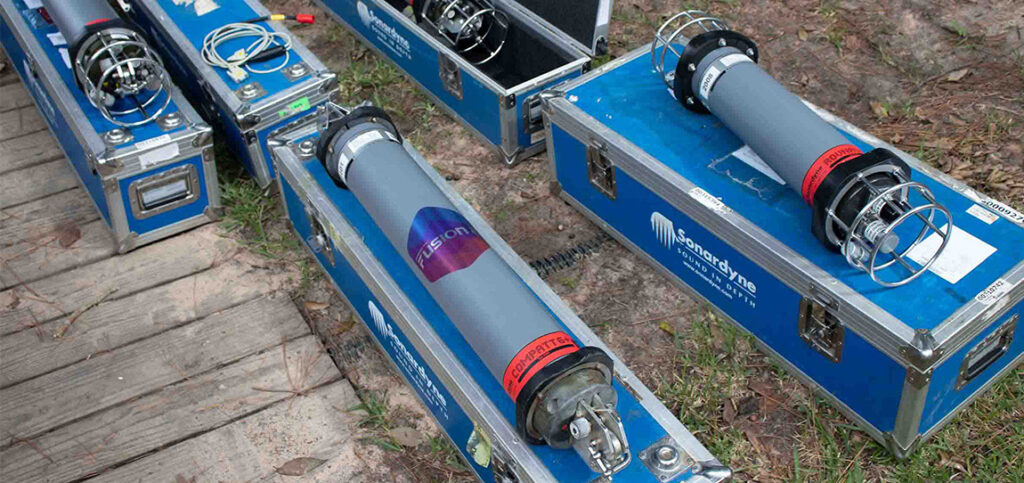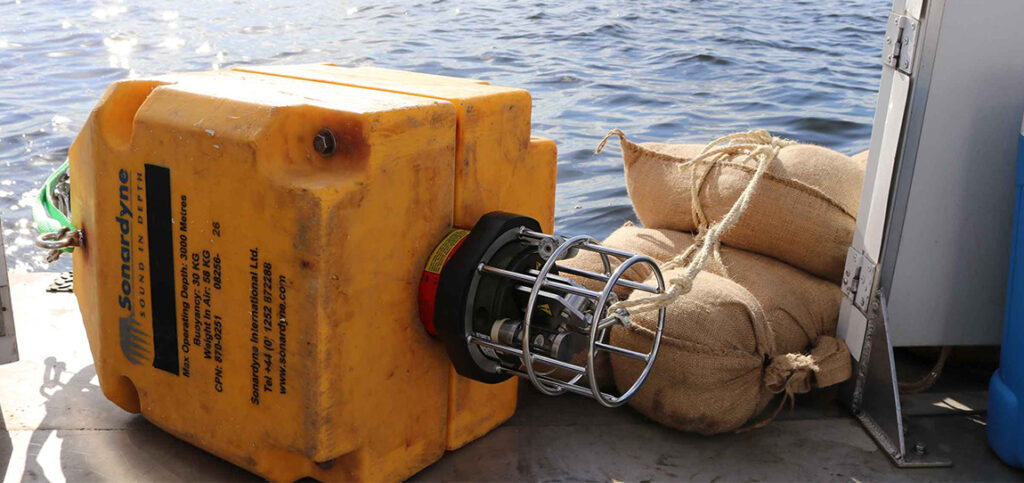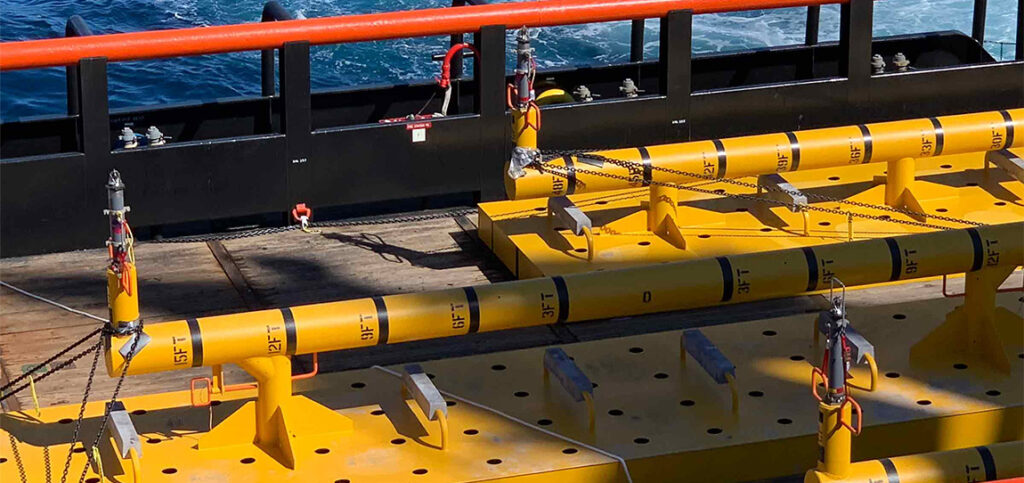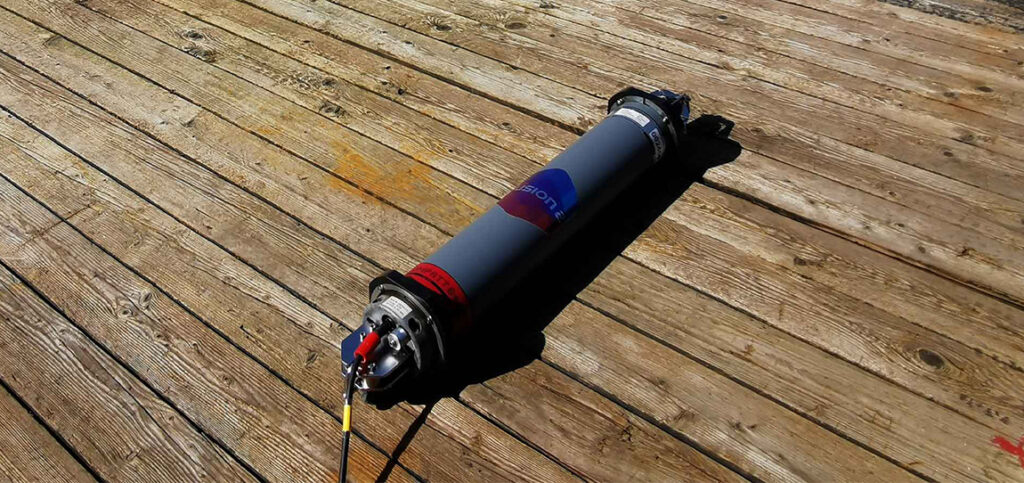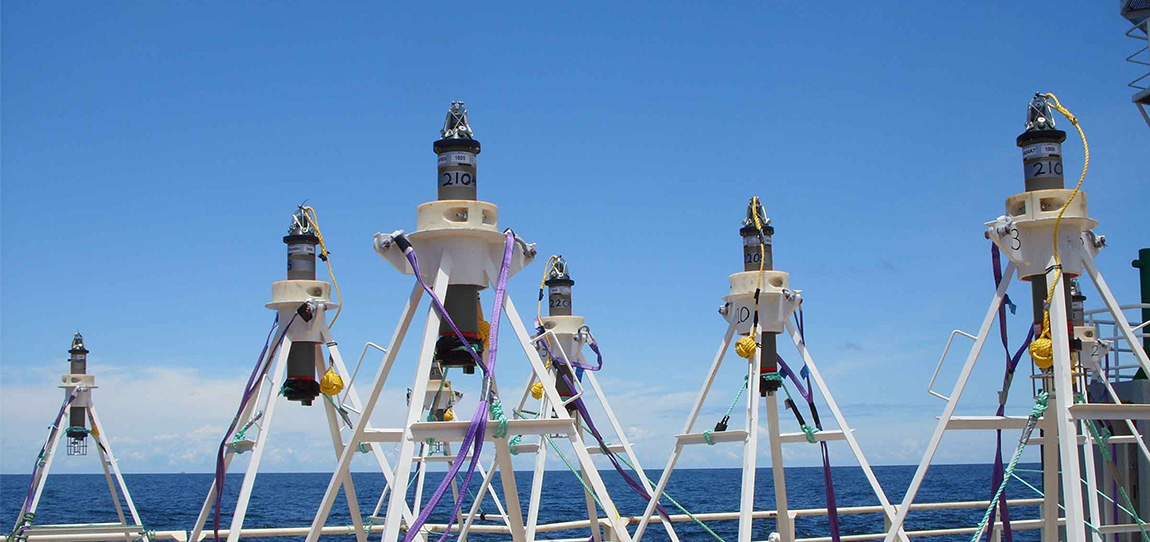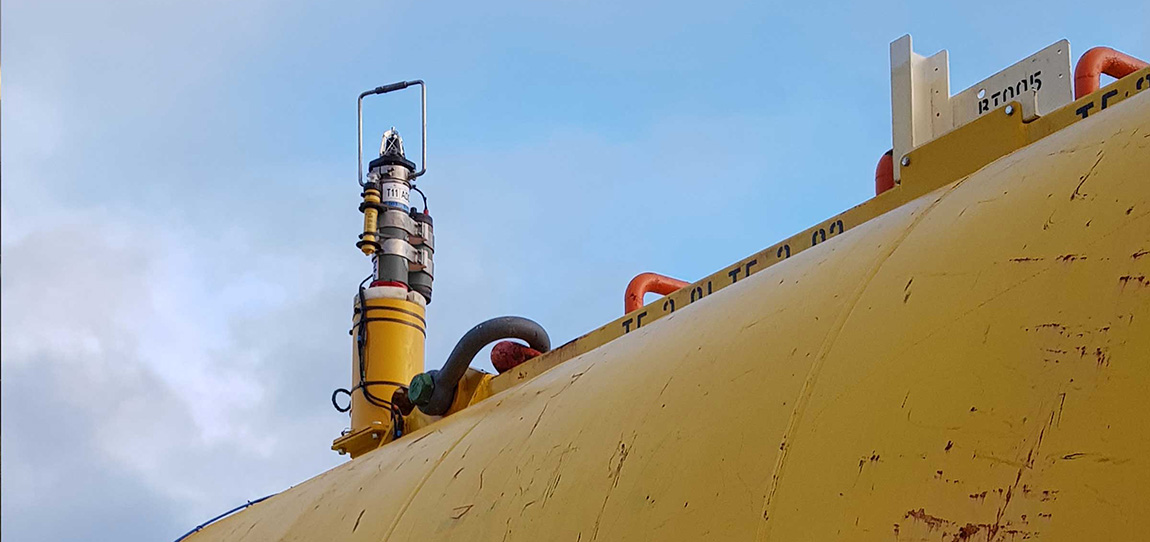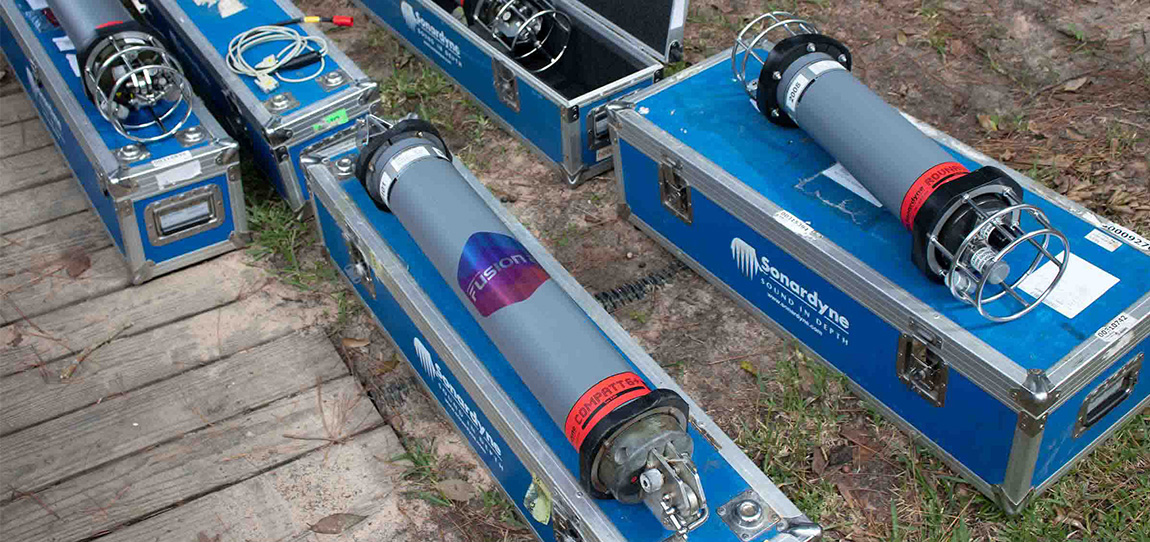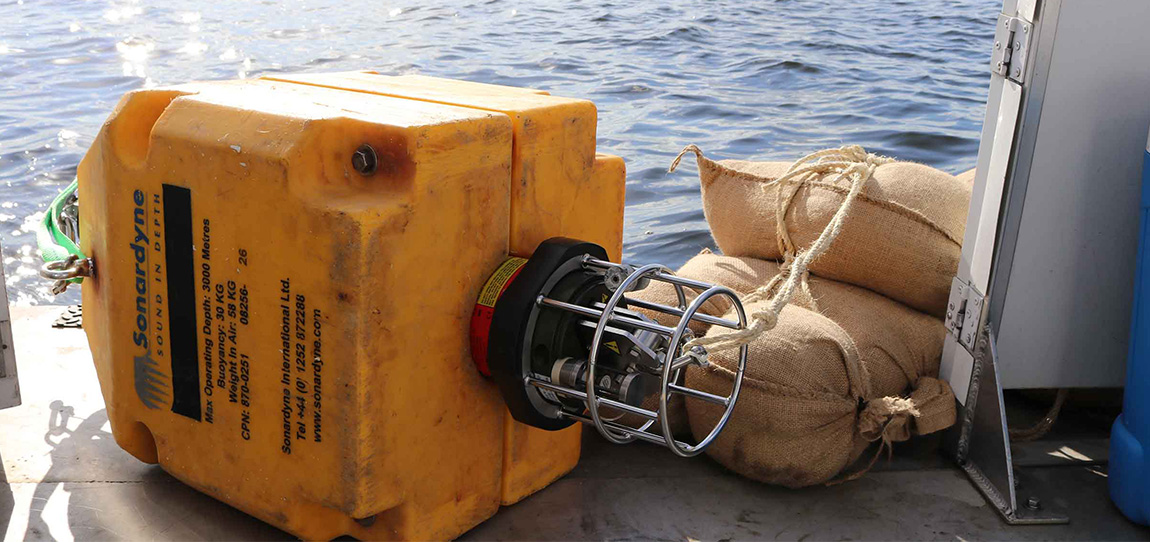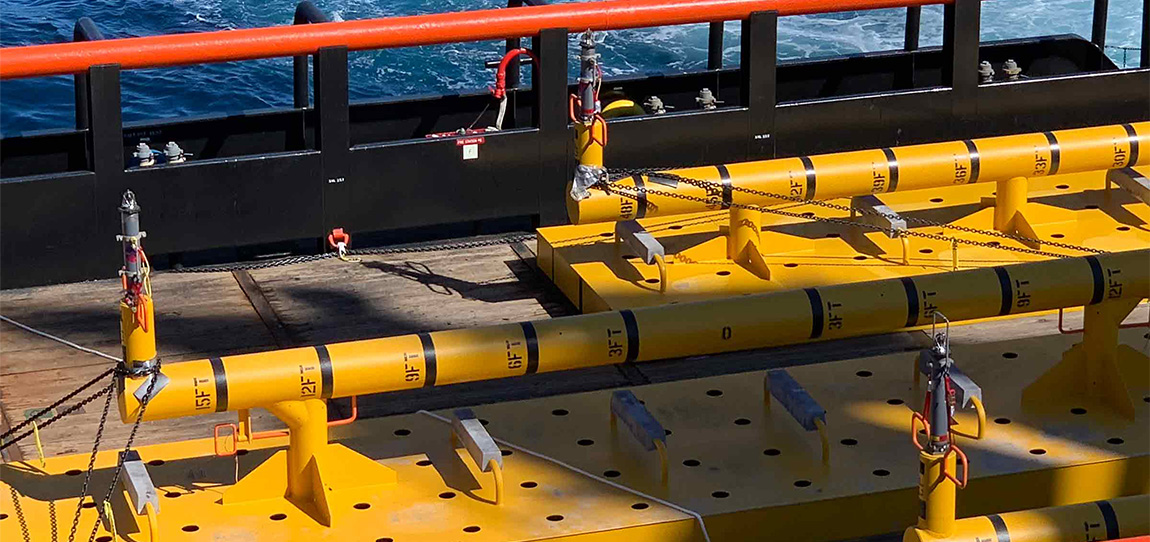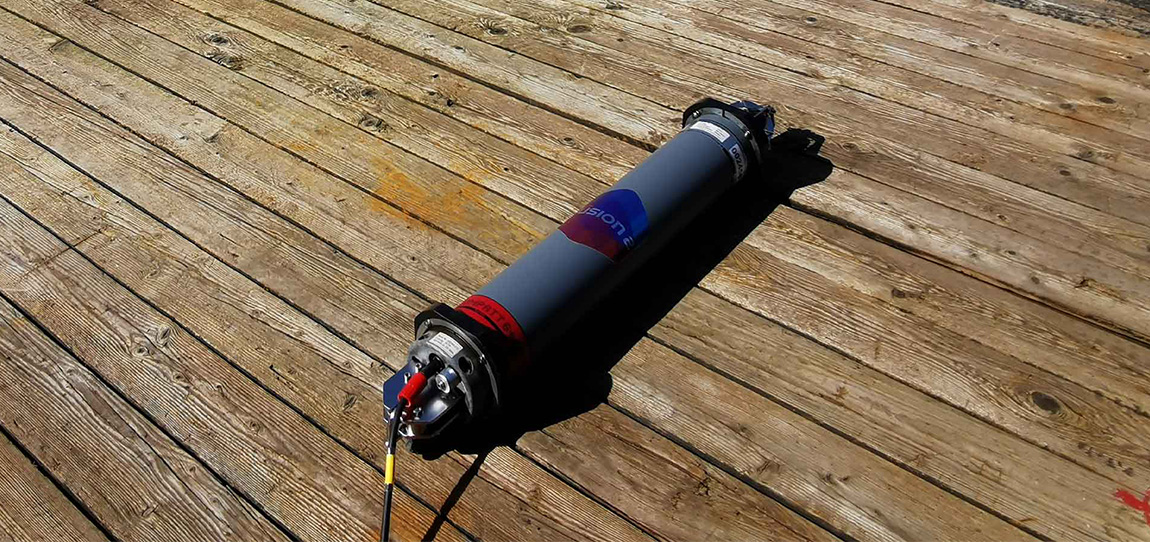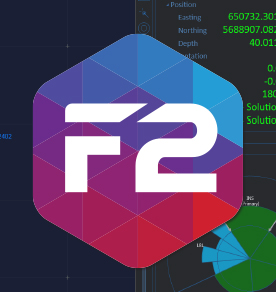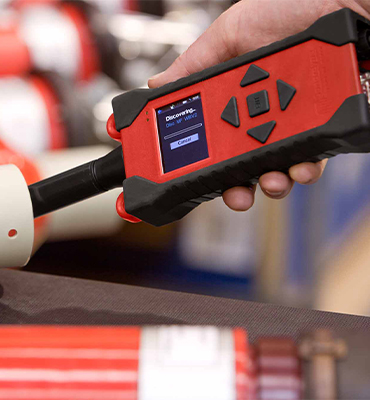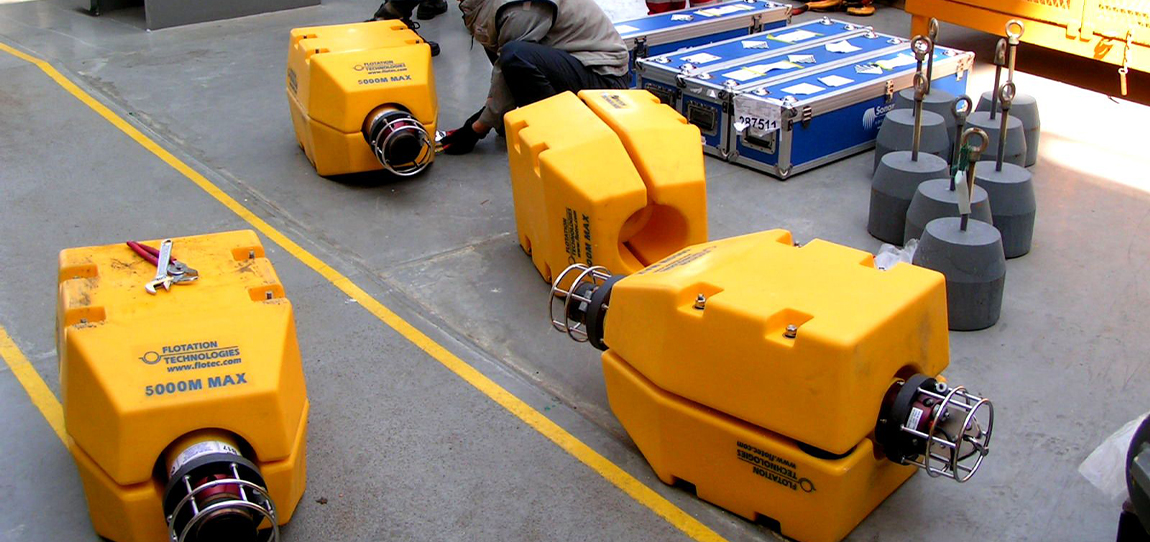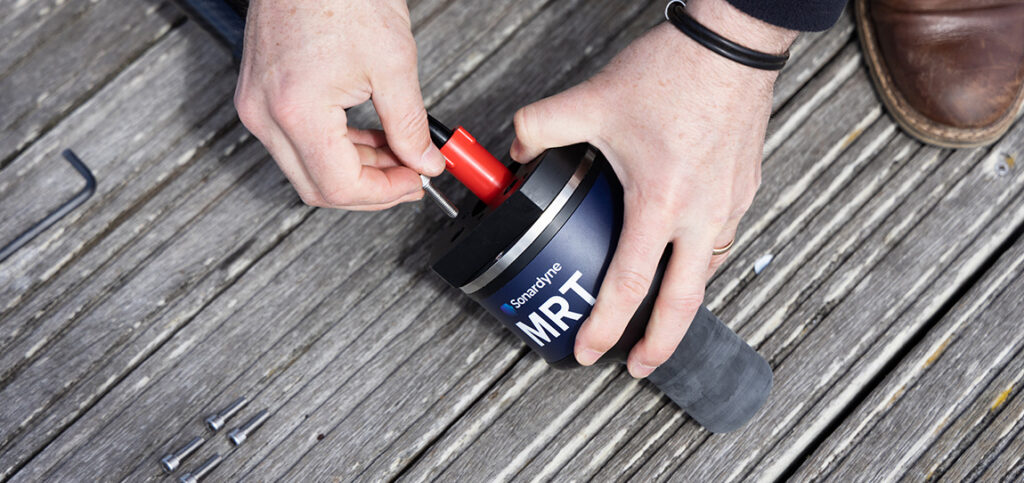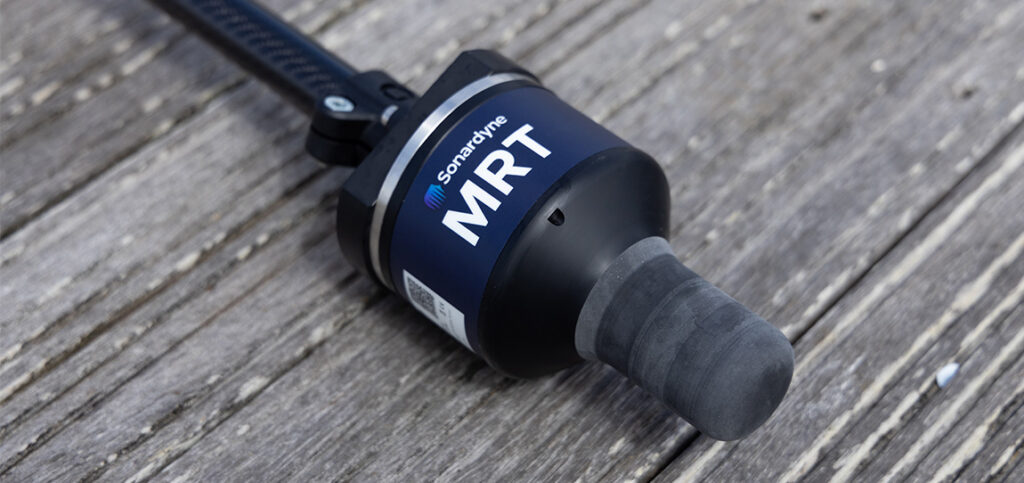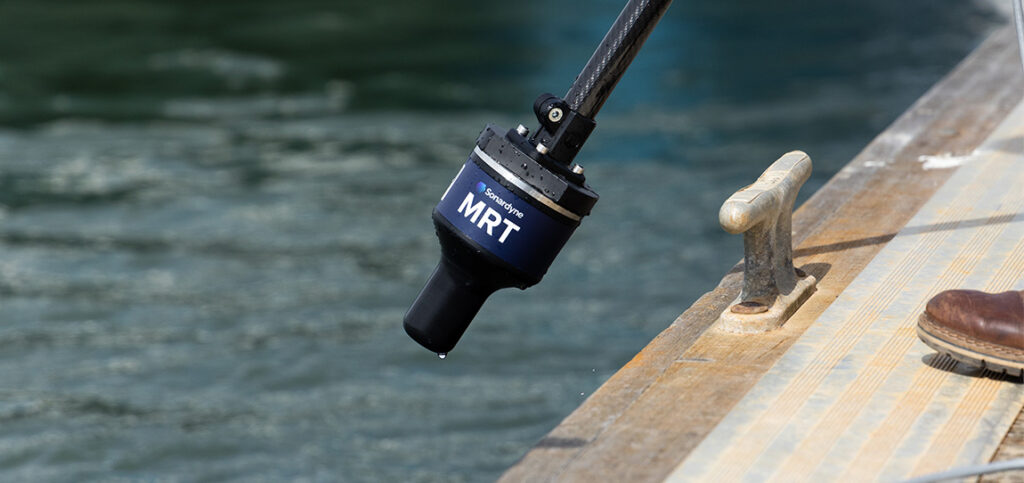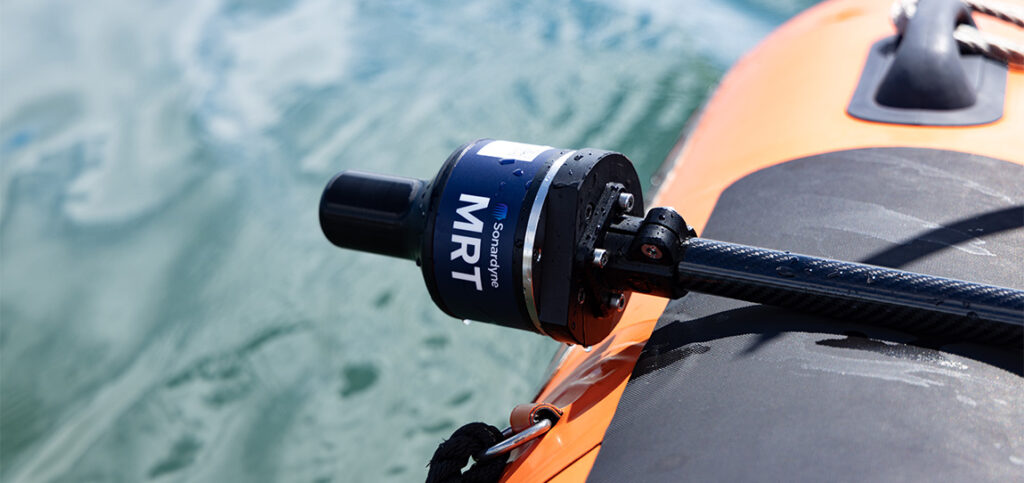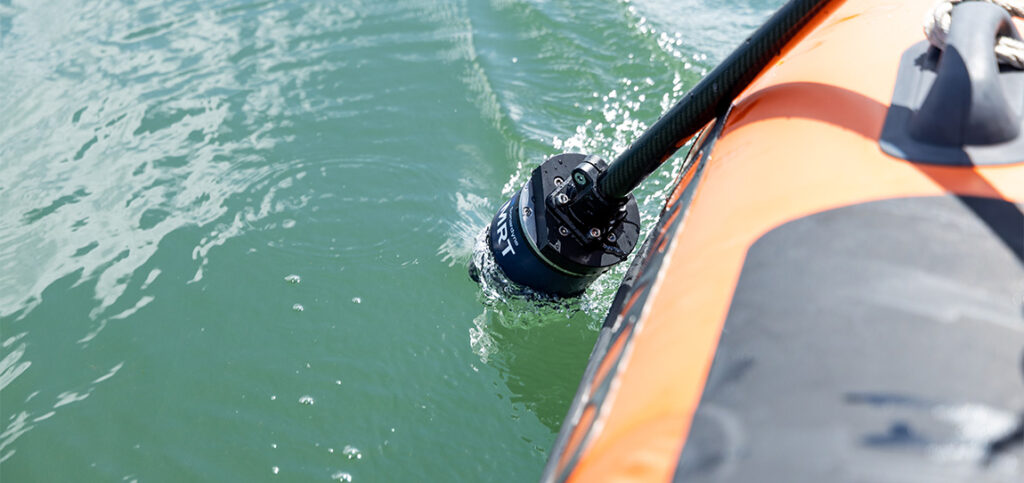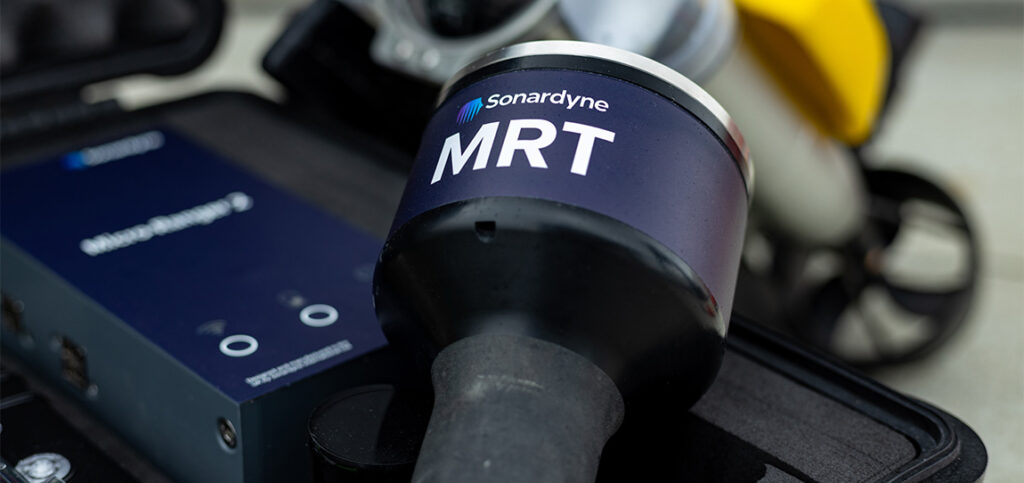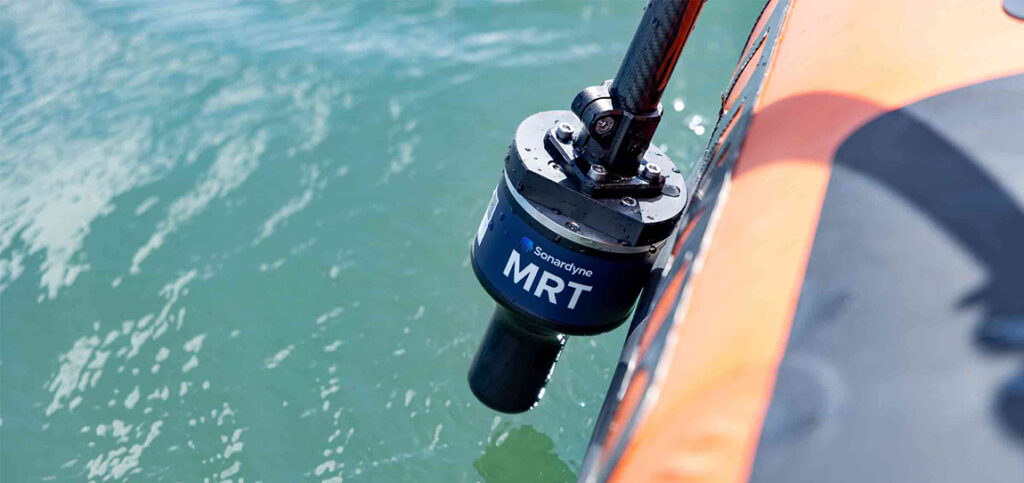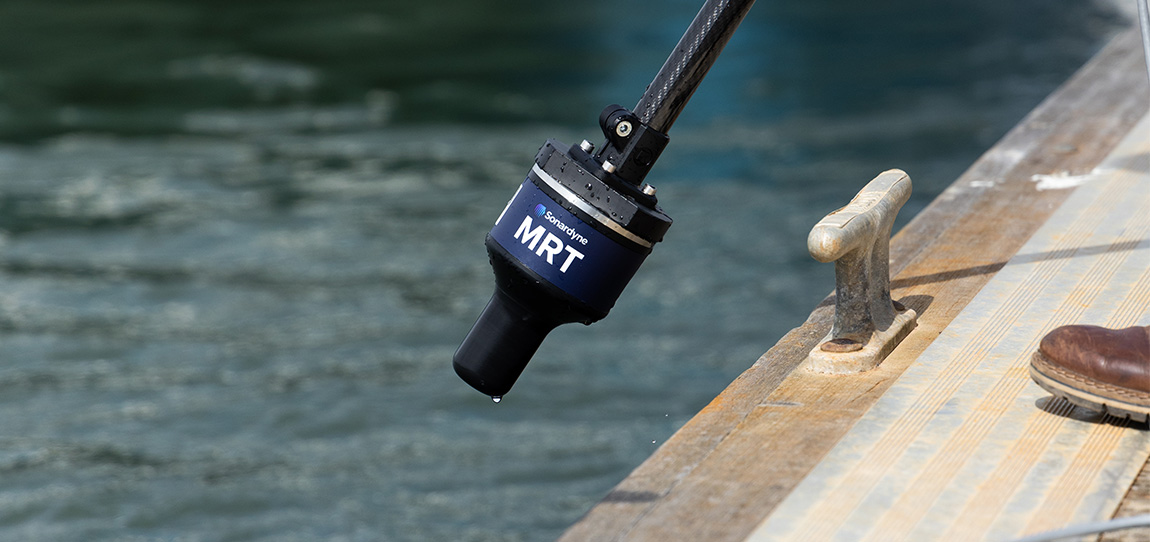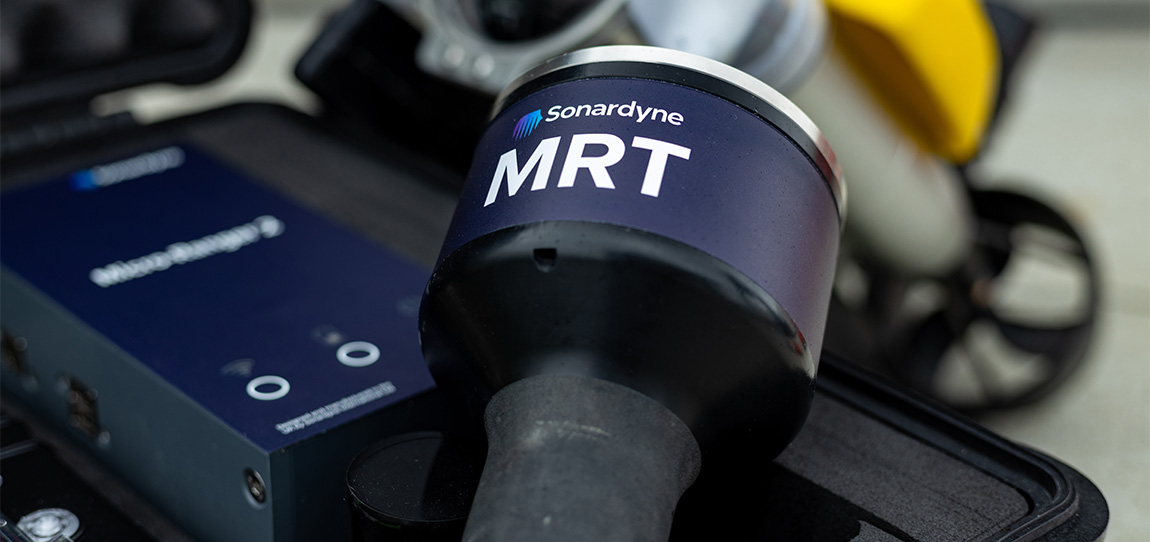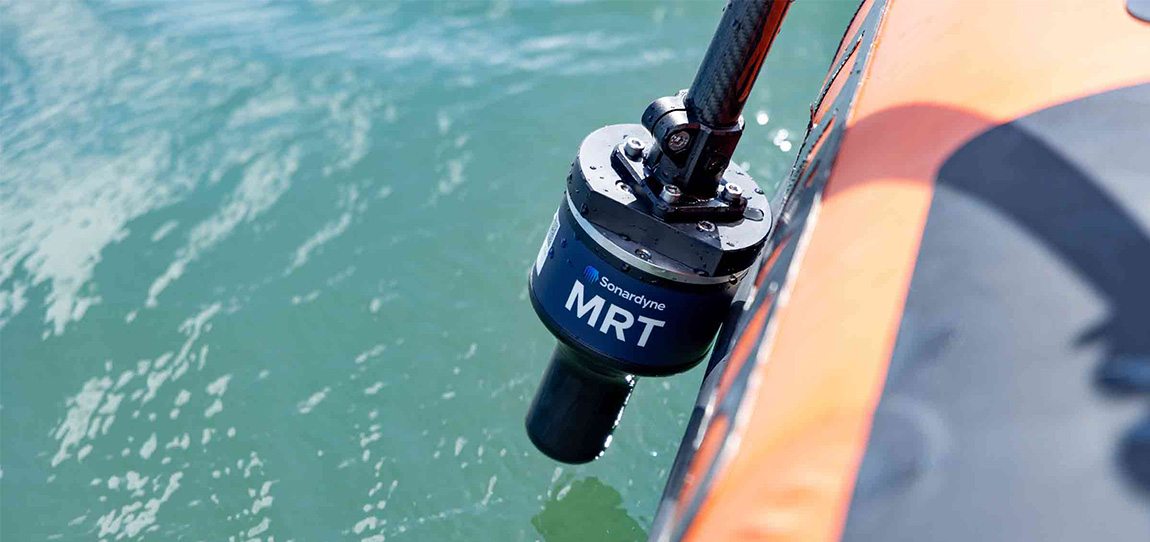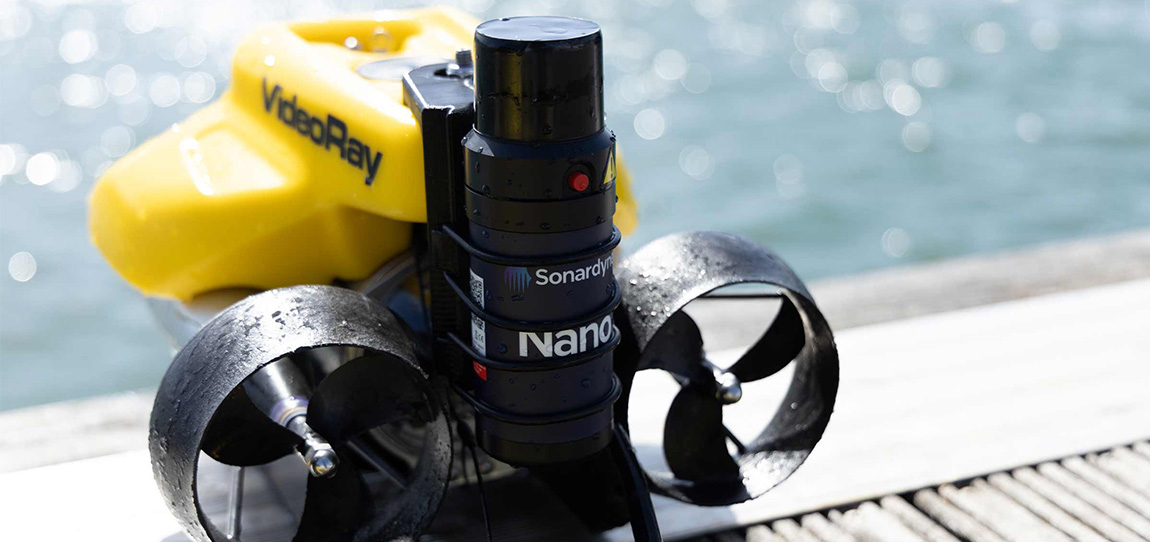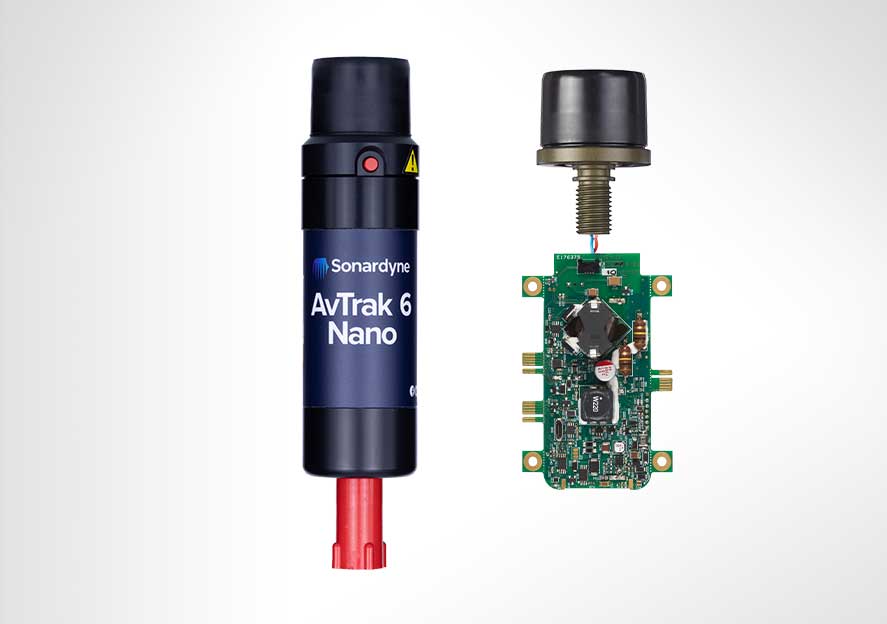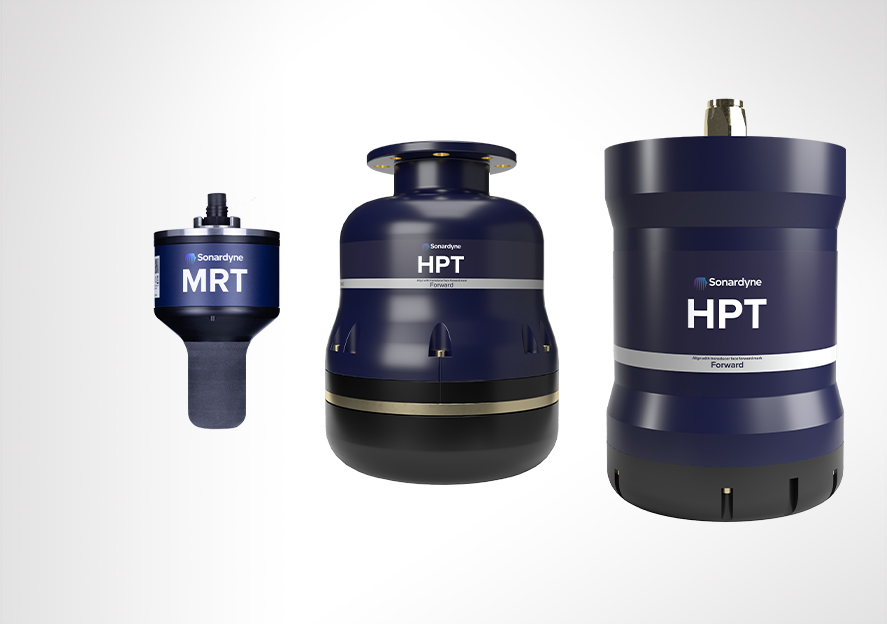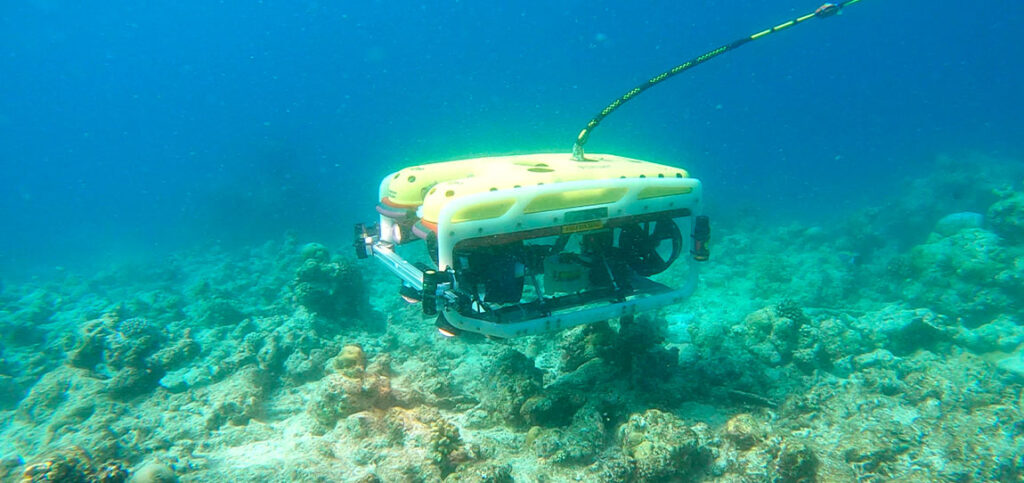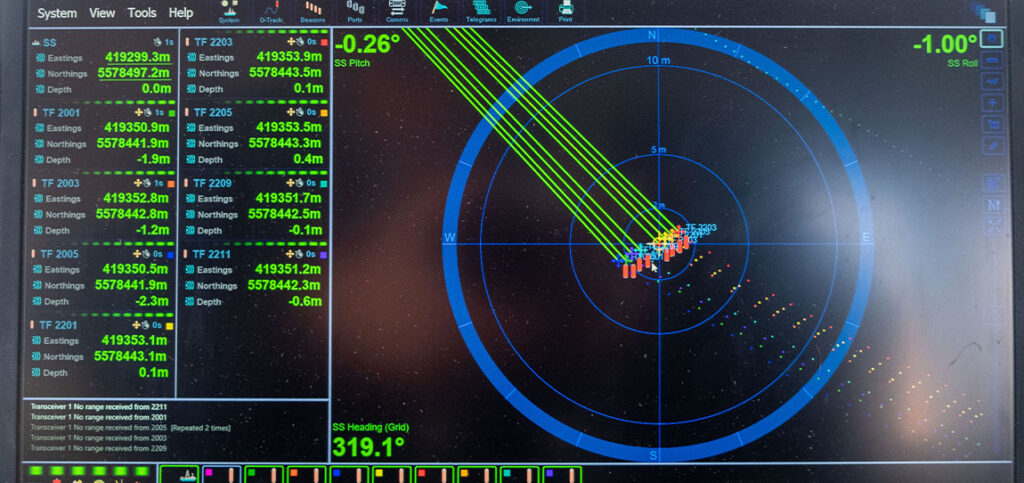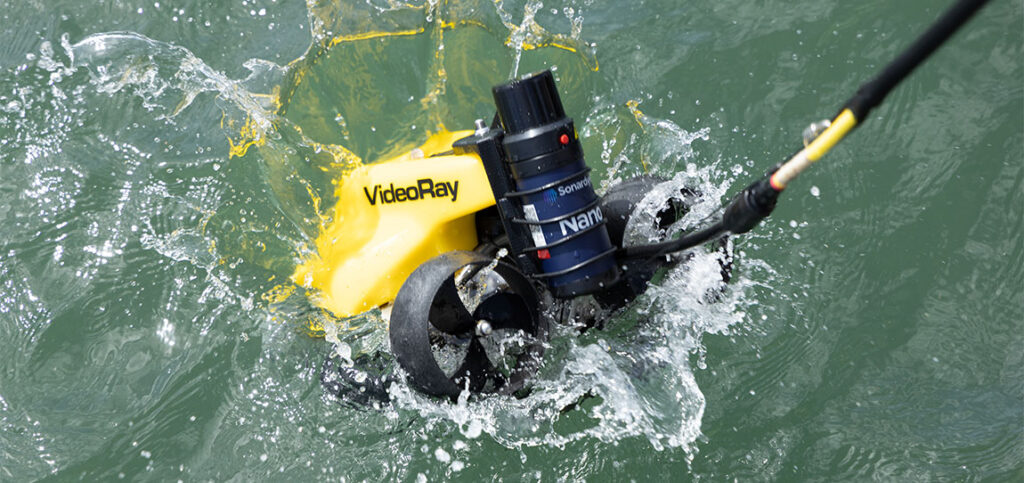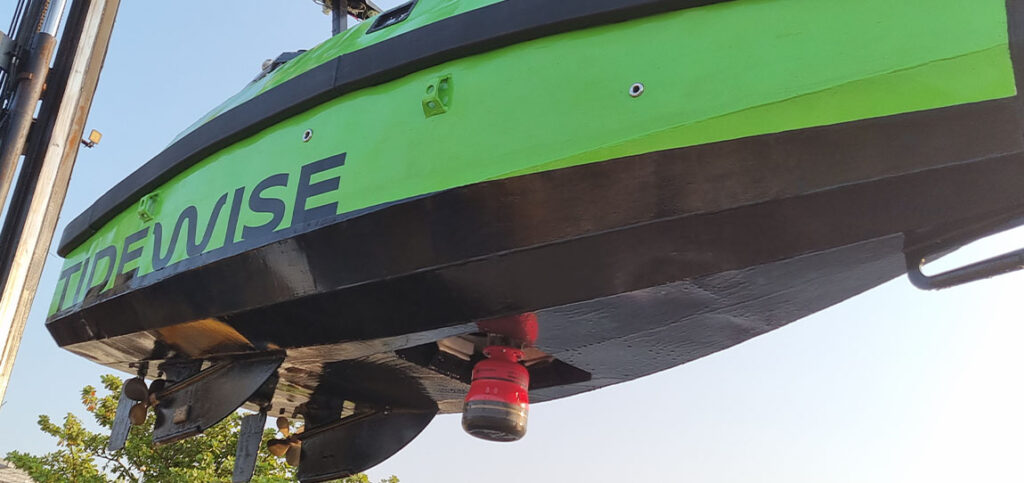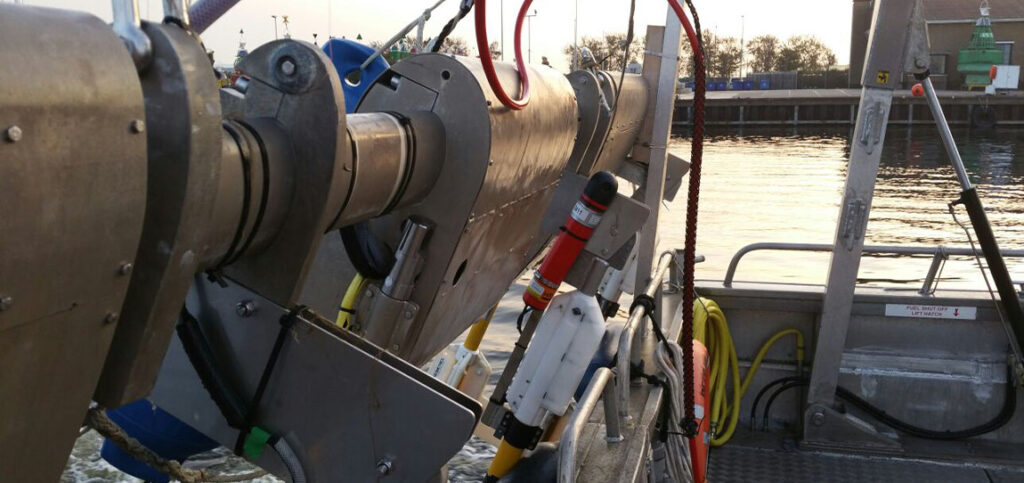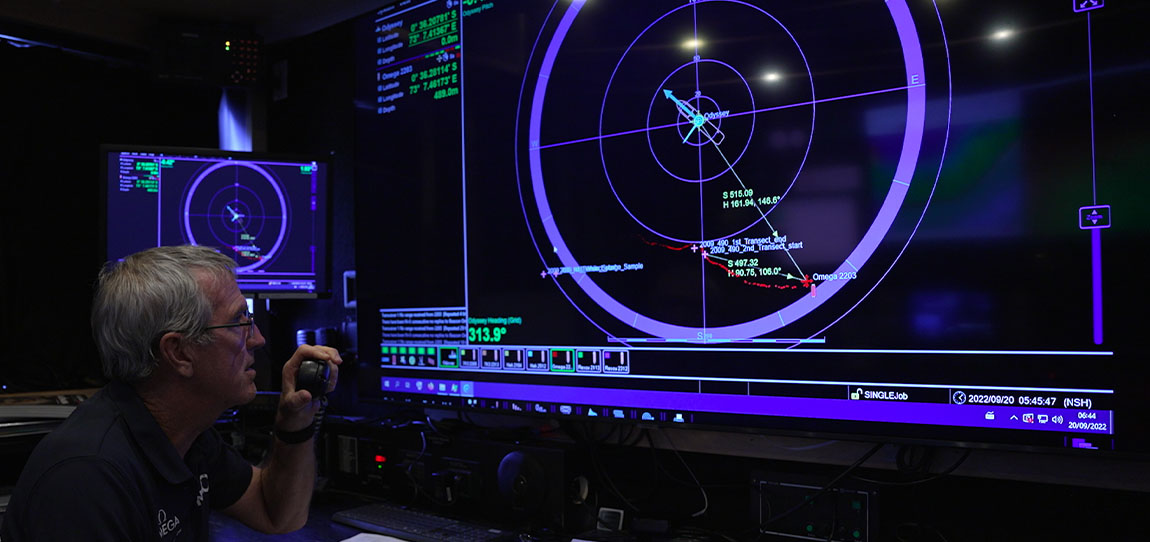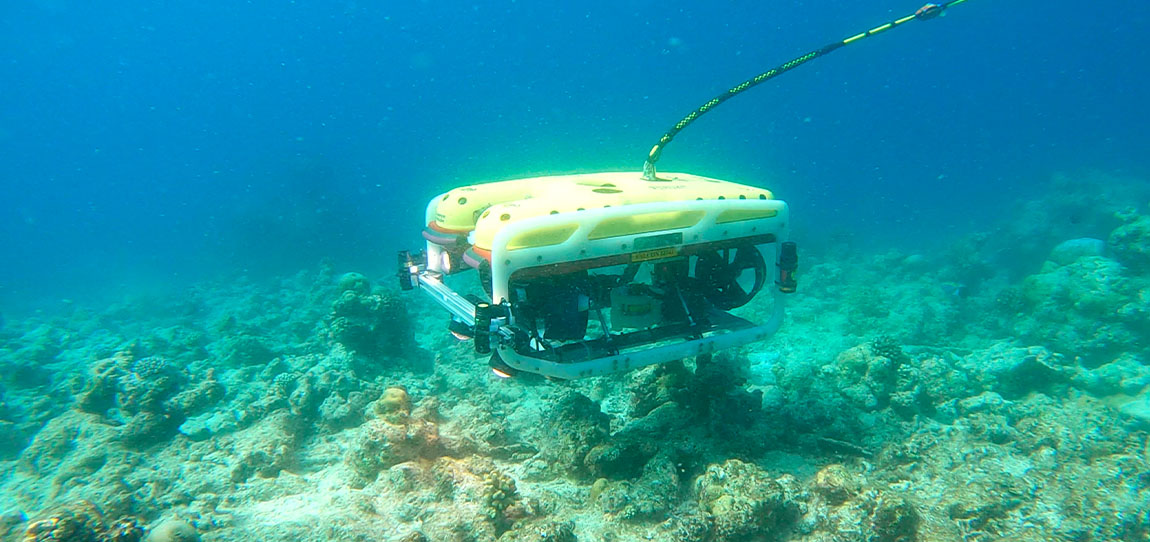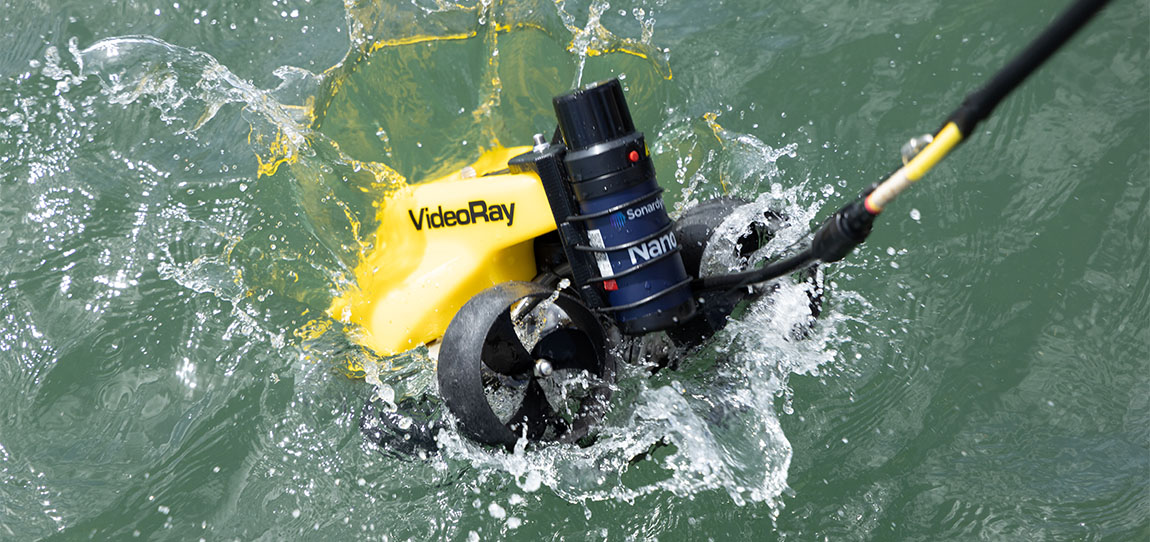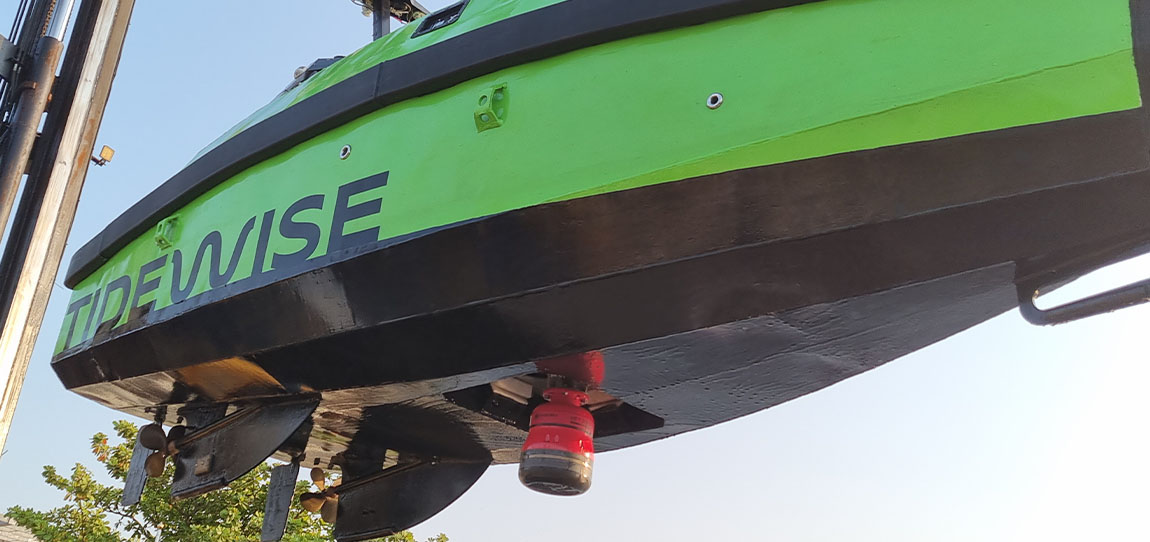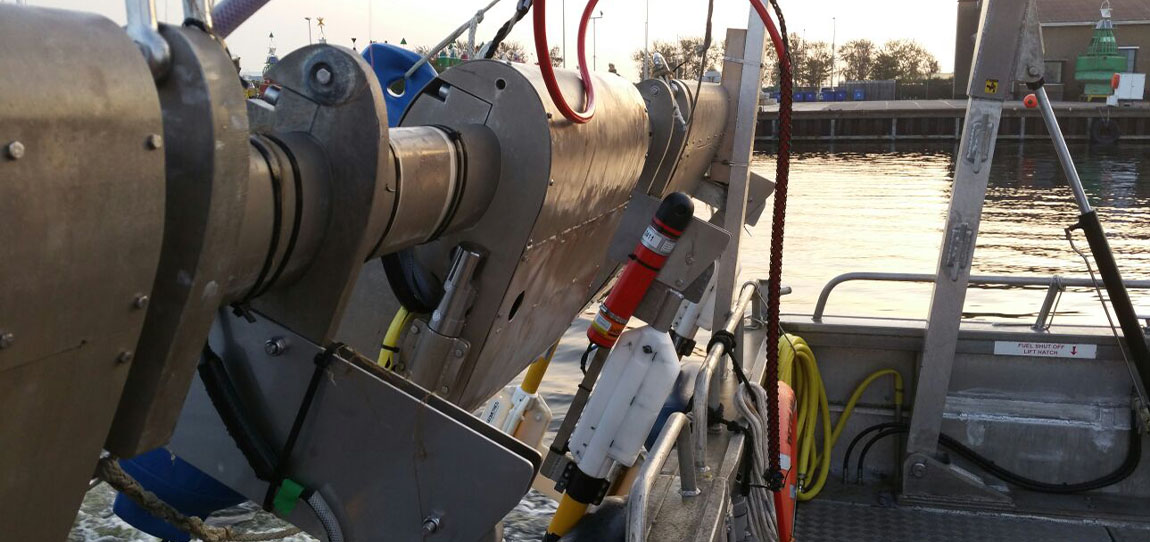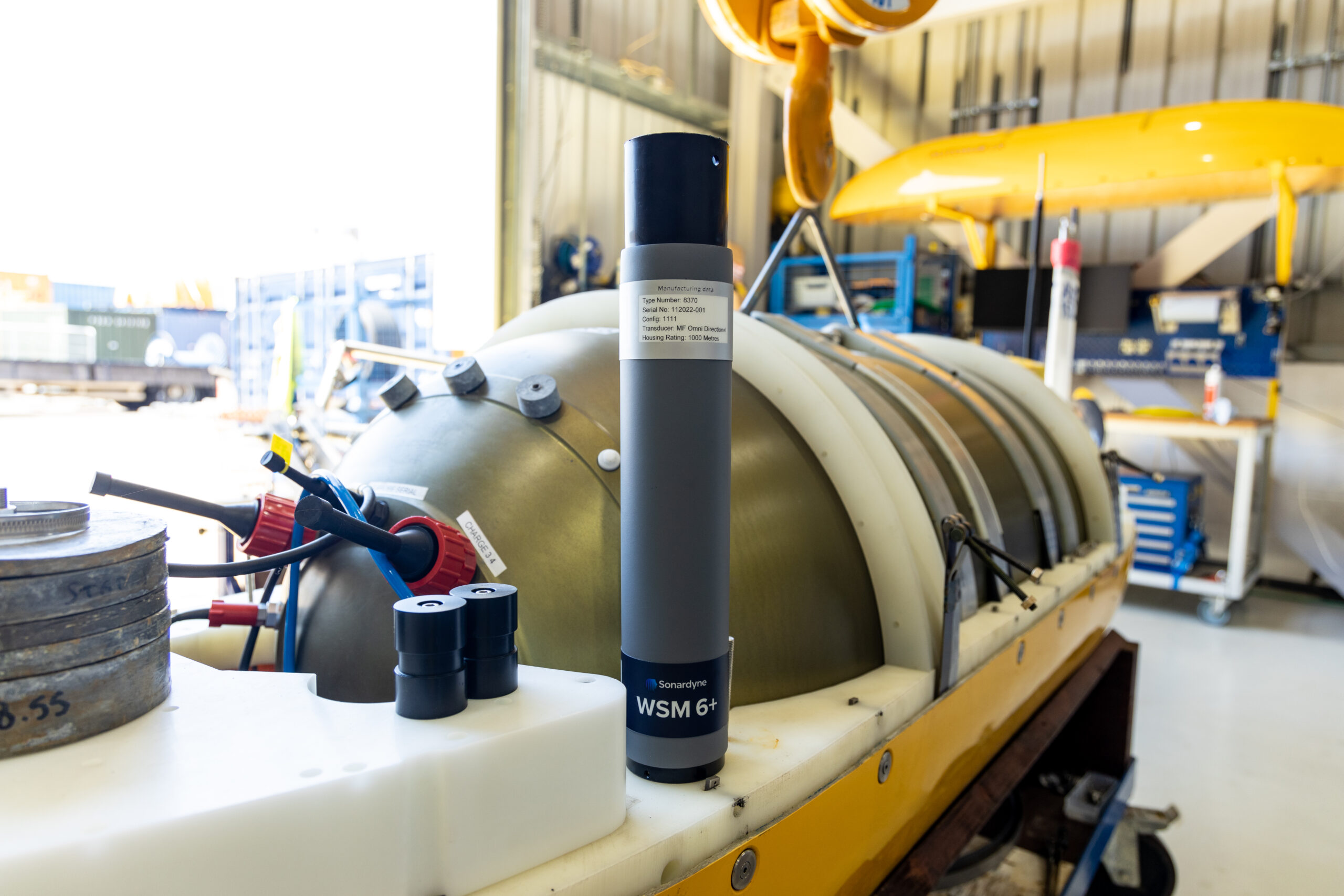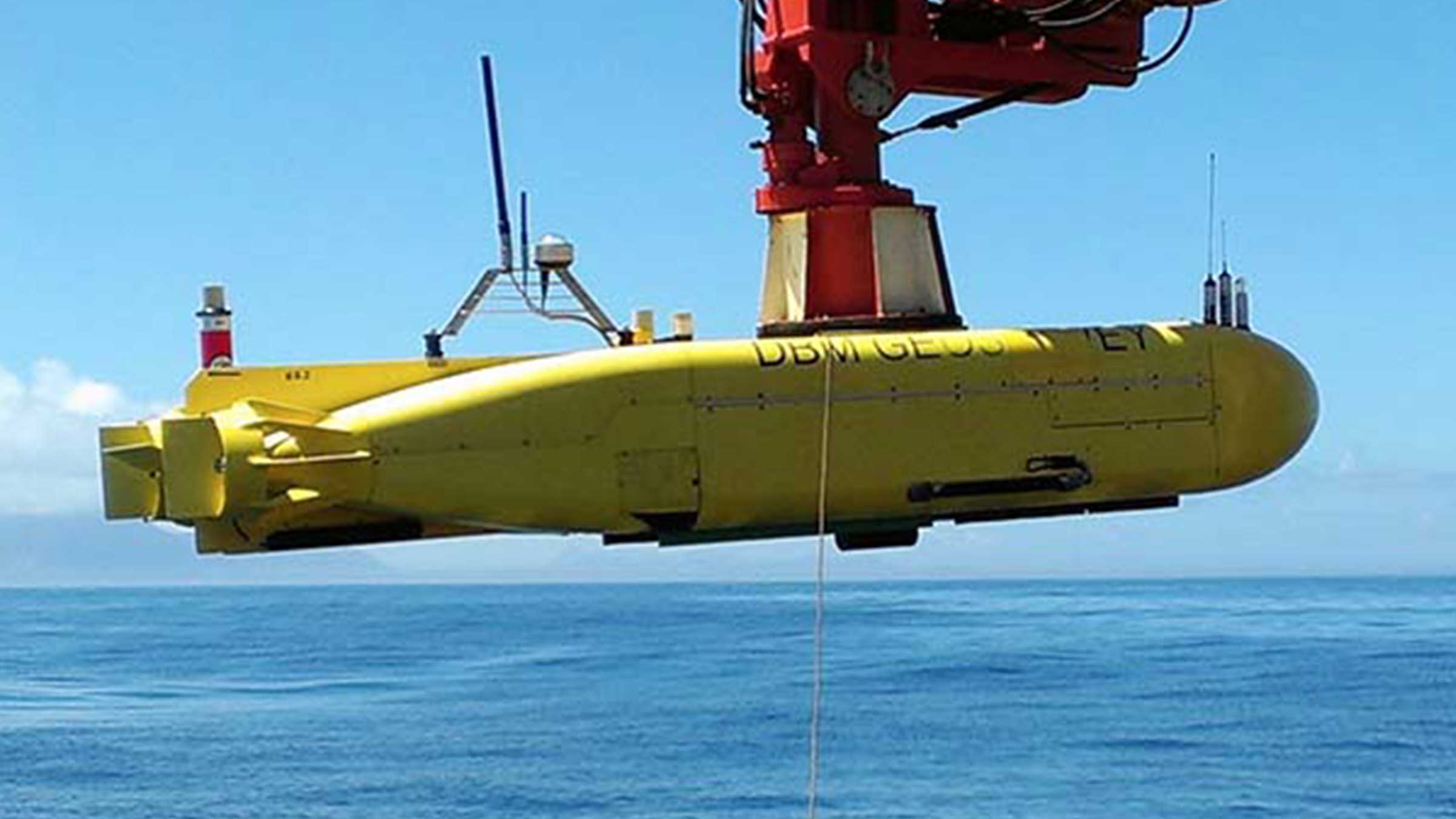Overview
Acoustic release transponders are a vital pieces of ocean equipment – relied upon by energy, defence and science users to moor valuable equipment strings for years at a time, and when commanded to do so, reliably return equipment and logged data to the surface.
Transponders need to be tough, reliable and easy to work with. The RT 6-HD meets these requirements.
Part of our new range of acoustic releases, RT 6-HD combines the extensive mechanical design track record with the flexibility of our 6G platform, resulting in enhanced battery life and perhaps most significantly, compatibility with our Ranger 2 USBL system.
At a glance
- Tested, loaded, deployed and released with Deck Topside
- Also works with Ranger 2 USBL to lift, lower and track heavy subsea structures in deep water
- Working Load Limit 2,500 kg (4:1)
- Depth rated to 7,000 m
- Highly reliable release mechanism
- Compact and rugged design
With RT 6-HD, you use your vessel’s Ranger 2 USBL to deploy, track, locate and command the instrument – removing the need for a separate topside unit. If you don’t have access to a Ranger 2 USBL, our rugged and lightweight Deck Topside with an over-the-side dunker is all you need to both configure and command RT 6-3000s.
With a WLL of 2,500 kg (at 4:1), twice that of our RT 6-3000 and RT 6-6000, RT-HD is designed for specialist heavy lift application scenarios such as deep water construction and salvage.
RT 6-HD is also our deepest rated acoustic release transponder at 7,000 m. Excellent corrosion resistance is achieved by using super duplex stainless steel for the housing materials.
RT 6-HD is configured with our iWand hand-held acoustic transponder test and configuration device.
High WLL
The highest standard WLL of 2,500 kg of any of our transponders without any additional load amplification frames.
Choice of topsides
You can use our rugged Deck Topside or, if you’ve got access to a Ranger 2 USBL system on your survey or research vessel, then you have everything you need to control your RT 6-HD.
Versatile
RT 6-HD is more than just an acoustic release. It can be tracked with our Ranger 2 USBL making relocating and recovering it fast and simple.
Specifications table
| Feature | Type 8322 |
|---|---|
| Depth Rating | 7,000 m |
| Operating Frequency | LMF (14–19 kHz) |
| Transducer Beam Shape | Hemispherical |
| Transmit Source Level (dB re 1 µPa @ 1 m) | 188 dB |
| Tone Equivalent Energy (TEE) | 192 dB |
| Receive Threshold (dB re 1 µPa) | <90 dB |
| Working Load Limit (4:1) | 2,500 kg |
| Proof Load | 5,000 kg |
| Breaking Load | 10,000 kg |
| Battery Life (Alkaline) | >32 months |
| Inclinometer Accuracy | ±5° |
| Surface Unit | Deck Topside, Ranger 2 USBL |
| Mechanical Construction | Super duplex stainless steel |
| Operating Temperature | -5 to 40°C |
| Storage Temperature | -20 to 55°C |
| Dimensions (Maximum) (Length x Diameter) | 691 x 164 mm |
| Weight in Air/Water | 24.5/20 kg |
| Options | Deep Water Deck Kit (Deck Topside) – 602-0180 |
Frequently asked questions
Software and control hardware
Manuals and quick start guides
Did you know?
RT 6-HD can be deployed using Deck Topside
Overview
SST 6 is a small rugged transponder designed to acoustically position of ocean bottom seismic cables and nodes, where high performance, small size, low cost and ease of programming are all important operational factors.
SST 6 incorporates our Wideband 2 digital acoustic signal processing architecture to deliver substantial performance gains over the previous generation SST, ensuring robust positioning performance in the most challenging of operational environments.
Innovations such as built-in, near field communications (NFC) technology, allow SST 6 transponders to be checked and programmed without human intervention, supporting operators’ vision for fully automated node handling and efficient back-deck ocean bottom seismic (OBS) operations.
At a glance
- Accurately positions seismic cables and nodes in water depths to 3,000 m
- Designed on 6G hardware and Wideband 2 technology platforms
- Compatible with Mini-Ranger and Ranger 2 USBL positioning systems
- Choice of depth ratings: 1,000 m or 3,000 m
- Over 1,520 unique acoustic transponder addresses supports large surveys
- Automated programming using NFC link without human intervention
SST 6 operates in the Medium Frequency (MF) band and is compatible with our Ranger 2 USBL systems. Ranger 2 USBL systems measure both range and bearing to SST 6 in the same operation, so an accurate position of the node or cable can be determined very quickly and at a high update rate.
Combining the use of Ranger 2 USBL and SST 6 in this way results in considerable savings in vessel time and new standards of efficiency for seismic operations.
NFC allows fast programming of 16 group interrogation addresses and 95 reply channels providing more than 1,520 unique acoustic identities.
This allows the marking of seismic cables and other applications demanding dense transponder coverage. SST 6 is configured using NFC with a suitable NFC-enabled handset (including NFC enabled Android™ handsets with the Sonardyne NFC App) or a dedicated HF radio frequency identification (RFID) reader.
The NFC link provides the ability to enter SST 6 into a storage mode when not in use, significantly increasing the overall battery endurance.
Specifications table
| Feature | Type 8325-1111 | Type 8325-3311 |
|---|---|---|
| Depth Rating | 1,000 m | 3,000 m |
| Operating Frequency | MF (20–34 kHz) | MF (20–34 kHz) |
| Transmit Source Level (re 1 µPa @ 1 m) | 187 dB | 187 dB |
| Battery Life | 9.5 Months | 9.5 Months |
| Operating Temperature | -5 to 40°C | -5 to 40°C |
| Storage Temperature | -20 to 55°C | -20 to 55°C |
| Dimensions (Length x Diameter) | 385 x 63 mm | 385 x 63 mm |
| Weight in Air/Water | 1.0/0.3 kg | 2.0/1.3 kg |
Frequently asked questions
STP files
Transponders
Datasheets
Manuals and quick start guides
Did you know?
SST 6 is compatible with Mini-Ranger and Ranger 2 USBL positioning systems
Overview
TZT is compact, simple to fit and easy to operate, making it the ideal choice for shallow-draft workboats, RHIBs and uncrewed surface vessels (USVs). Onboard, the splashproof (normally surface-mounted) transceiver electronics module is cable connected to your PC equipped with our HydroPos software (or third-party software) and remote acoustic transducer.
The remote transducer is normally attached to a rigid pole and deployed over the side of the craft you’re using. A GNSS receiver is typically attached to the top of the pole but, aside from that, there’s no need for any other ancillary equipment, such as a gyro or attitude and reference system, and the complexities that integrating them would involve.
At a glance
- Accurately positions your Sonardyne MF or HF seismic node and ocean bottom cable-mounted transponders
- Provides high-accuracy positioning right into the surf zone: <1 m water depth
- Designed for small work boats, RHIBs and USVs working in parallel with your node laying vessel
- Choice of frequencies depending on your transponder inventory: HF for Type 7815s or MF for SST 6s
On command from your PC, the TZ Transceiver acoustically interrogates up to nine TZ/OBC transponder or up to 95 SST 6 transponders at a time and the acoustic responses are used to generate range measurements to each of them.
By combining the many acoustic range measurements made to each transponder, with GNSS data input into HydroPos, it is possible to generate accurate positions of all transponders to better than 1 m absolute precision.
Mounting TZT onto a USV unlocks the opportunity to reduce the risk, cost and environmental impact of your surveys by reducing the number of crewed vessels required to support your survey.
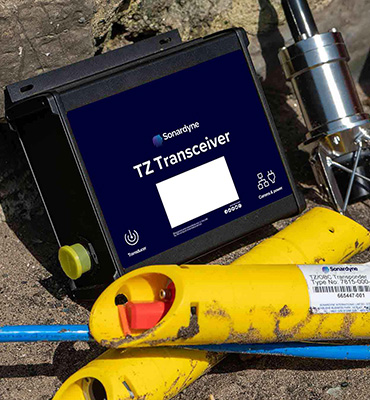
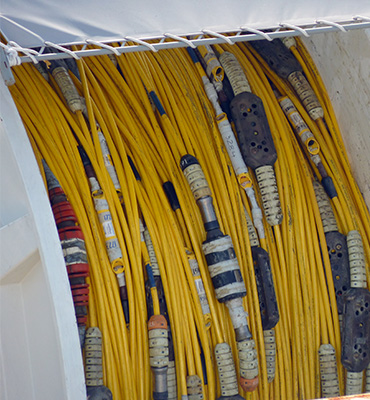

Specifications table
| Feature | Type 8263-010-0021 | Type 8263-010-0022 |
|---|---|---|
| Operating Frequency | HF (35–50 kHz) | MF (20–34 kHz) |
| Transmit Source Level (dB re 1 µPa @ 1 m) | >184–186 dB | >184-187 dB |
| Receive Sensitivity (dB re 1 µPa) | <90 dB | <90 dB |
| Ranging Precision | Better than 0.5 m | Better than 15 mm |
| Addresses | 401 | 1520 |
| Power | 28 V dc, maximum 2 A | 28 V dc, maximum 2 A |
| Communications | RS232/RS485 @ 9,600 to 115,200 baud, Ethernet | RS232/RS485 @ 9,600 to 115,200 baud, Ethernet |
| Mechanical Construction | Aluminium alloy | Aluminium alloy |
| Operating Temperature | -5 to +50°C | -5 to +50°C |
| Storage Temperature | -20 to +70°C | -20 to +70°C |
| Dimensions (Length x Width x Height) | 223 x 220 x 91 mm | 223 x 220 x 91 mm |
| Weight | 3 kg | 3 kg |
| Feature | Remote Transducer HF | Remote Transducer MF |
| Operating Frequency | HF (35–50 kHz) | MF (20–34 kHz) |
| Depth Rating (Acoustic Transducer) | 100 m | 100 m |
| Cable Length | 20 m | 20 m |
| Mechanical Construction | Stainless steel | Stainless steel |
| Dimensions (Diameter x Length) | 90 x 211 mm (without cable) | 90 x 211 mm (without cable) |
| Weight in Air | 3.7 kg (without cable) | 3.7 kg (without cable) |
Did you know?
TZT is suitable for USVs and seismic surveys
Overview
Prior to deployment from a cable lay boat, the transponders are attached to the seismic cable at each ground station, typically every 50 metres. Once the bottom cable is laid, the acoustic system measures the ranges from the surface transceiver to the transponders to enable their exact positions to be established. This positioning process can either be conducted while laying the cable or later while shooting.
The transponders are small and lightweight and have been proven to be able to withstand the demanding and varied operational environment of OBC and TZ surveys.
At a glance
- Use it to position OBS cables in water depths up to 500 metres
- Built to withstand rugged operational environments
- Thousands of unique acoustic addresses
- Up to 18 months’ listening life
- Optional RFID tag for easy asset tracking
Standard features include a depth rating of 500 metres, a unique acoustic ‘address’ enabling thousands of units to be laid in a single deployment and automatic battery voltage monitoring to allow users to better plan their maintenance schedules.
In OBC operations using a ‘squirter’ cable deployment system, ‘carapaces’ are available that provide a fast and secure means of attaching transponders to the cable. The carapaces are manufactured from tough plastic that encapsulates the transponder and optional RFID asset tracking tag, clamping it securely to the cable whilst protecting it from the high cable deployment and recovery speeds.
The carapace design, which is now in use with many crews around the world, has been proven to be easy to fit and reduces long term maintenance when compared with traditional tie-wrap and tape methods. The low profile shape of the carapace also reduces the risk of snagging and as it is acoustically ‘quieter’ in the water, creating less noise interference down the cable.
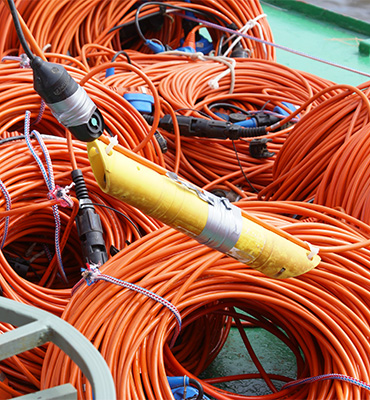
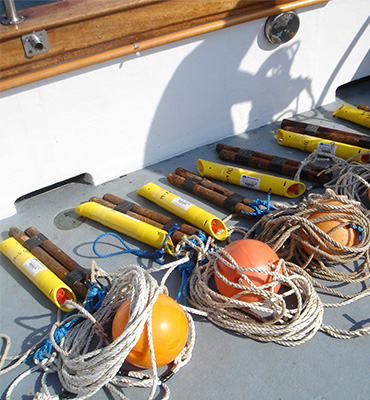
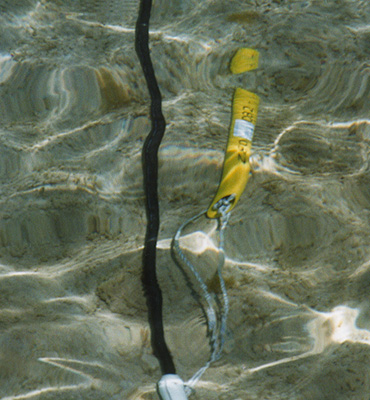
Specifications table
| Feature | Type 8365-0001 | Type 8365-0002 |
|---|---|---|
| RFID Tag | No | Yes |
| Depth Rating | 500 m | 500 m |
| Operating Frequency | HF (33–50 kHz) | HF (33–50 kHz) |
| Transmit Source Level (dB re 1 µPa @ 1 m) | 184–187 dB | 184–187 dB |
| Receive Sensitivity (dB re 1 µPa) | 105–115 dB | 105–115 dB |
| Number of Unique Addresses | 3609 (field programmable) | 3609 (field programmable) |
| Battery Life (Alkaline) | 18 months | 18 months |
| Mechanical Construction | Anodised aluminium alloy and plastic | Anodised aluminium alloy and plastic |
| Operating Temperature | -5 to +40°C | -5 to +40°C |
| Storage Temperature | -20 to +55°C | -20 to +55°C |
| Dimensions (Length x Diameter) | 433 x 63 mm | 433 x 63 mm |
| Weight in Air/Water | 1.1/0.2 kg | 1.1/0.2 kg |
| Deck Unit | Type 7967-000-02 (includes transducer and 10 m of cable) | Type 7967-000-02 (includes transducer and 10 m of cable) |
Frequently asked questions
Manuals and quick start guides
Did you know?
TZ transponder is part of our TZ OBC system
Overview
WMT is a 6G compatible, high acoustic output power USBL transponder available in two depth versions: 3,000 m and 7,000 m. The 7,000 m version has a higher acoustic output power level for improved long-range operation.
For ROV and towfish tracking, WMT supports responder trigger for faster position updates, an integrated rechargeable Li-Ion battery pack that is charged from the ROV’s power supply and full RS232 communications enabling channel set up, power and gain etc. to be changed from the surface.
At a glance
- Use it with Ranger 2 for deep water, long layback tracking tasks
- High power acoustic output and directional transducer
- Responder mode for fast position updates
- Full two-way Sonardyne Wideband 2 interrogation and reply
- Li-Ion rechargeable battery pack
- Optional remote transducer
An on/off switch (3,000 m only) helps to ensure the battery pack is not discharged when not in use. If an umbilical trigger is not available, then the full Wideband transponder mode provides excellent USBL performance in a small, lightweight package.
Remote omni or directional transducers are available for WMT. These make installation on a ROV easier as the remote transducer can be installed where there is good line-of-sight and is easily replaced if damaged. The main body of the transponder can then be installed within the ROV frame where it is well protected from damage.
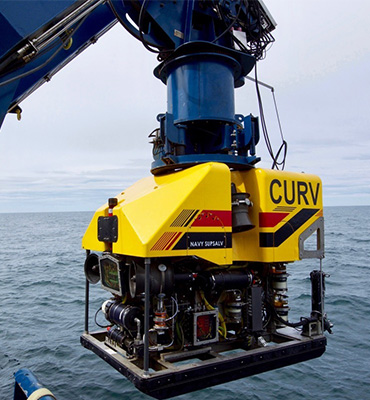
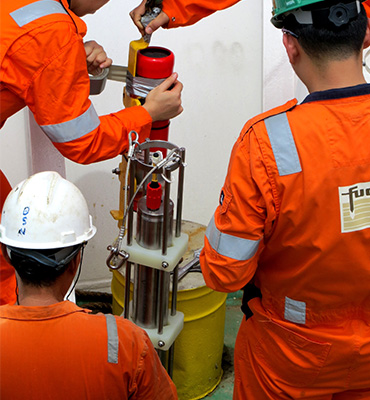
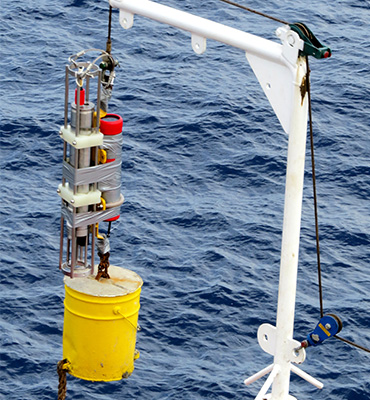
Specifications table
| Feature | Type 8190-3111 | Type 8190-3112 | Type 8190-7212 | |
|---|---|---|---|---|
| Depth Rating | 3,000 m | 3,000 m | 7,000 m | |
| Operating Frequency | MF (20–34 kHz) | MF (20–34 kHz) | MF (20–34 kHz) | |
| Transducer Beam Shape | Omni-directional | Directional | Directional | |
| Source Level (re 1 µPa @ 1 m) |
High Power | 187 dB | 193 dB | 199 dB |
| Low Power | 181 dB | 187 dB | 193 dB | |
| Tone Equivalent Energy (TEE) WBv2+ |
High Power | 193 dB | 199 dB | 205 dB |
| Low Power | 187 dB | 193 dB | 199 dB | |
| Range Precision | Better than 15 mm | Better than 15 mm | Better than 15 mm | |
| Depth Sensor | ± 0.5% full scale | ± 0.5% full scale | ± 0.5% full scale | |
| Communications Interface | RS232 (9,600–115,200 baud) | RS232 (9,600–115,200 baud) | RS232 (9,600–115,200 baud) | |
| External Supply Voltage | 24 or 48 V dc (± 10%) | 24 or 48 V dc (± 10%) | 24 or 48 V dc (± 10%) | |
| External Power | Sleep | ~650 mW | ~650 mW | ~650 mW |
| Wideband Listening | ~1 W | ~1 W | ~1 W | |
| Battery Charging | 6 W | 6 W | 6 W | |
| Peak (During Transmission) |
<50 W | <50 W | <50 W | |
| External Power Switch | Yes | Yes | No | |
| Battery Life (Li-ion 15 V) |
Listening | 30 days | 30 days | 30 days |
| Continuous 5 Seconds Interrogation |
Approx. 6 days at low power | Approx. 6 days at low power | Approx. 6 days at low power | |
| Mechanical Construction | Anodised aluminium alloy and plastics | Anodised aluminium alloy and plastics | Anodised aluminium alloy and plastics | |
| Operating Temperature | -5 to 40°C | -5 to 40°C | -5 to 40°C | |
| Storage Temperature | -20 to 55°C | -20 to 55°C | -20 to 55°C | |
| Dimensions (Diameter x Length) | 94 x 501 mm | 94 x 513 mm | 98 x 513 mm | |
| Weights in Air/Water | 5.1/2.2 kg | 7.0/3.5 kg | 7.0/3.5 kg | |
| Options | Remote, Cable Connected Transducer (see separate datasheet) |
Remote, Cable Connected Transducer (see separate datasheet) |
None |
Frequently asked questions
Software and firmware
Software and control hardware
Datasheets
Manuals and quick start guides
Technical bulletin
Did you know?
WMT is used with Ranger 2 USBL for tracking and communications
Overview
WSM 6+ is one our most popular USBL transponders, selected by customers for its small size, value and dependable performance in all environments, shallow or deep.
It’s the perfect choice for fitting to observation and work-class ROVs, towfish, submersibles and equipment being deployed onto the seabed for short durations.
WSM 6+ is compatible with all of our Ranger 2 USBL systems and we even include one with every Ranger 2 Standard – as standard.
The compact and rugged design is based on the field proven mechanics from previous generation designs and is available with omni-directional or directional transducers. The omni version is depth rated to 1,000 m and the directional is depth rated to 4,000 m.
At a glance
- Rechargeable USBL transponder designed for tracking ROVs, towfish and equipment
- Choice of 1,000 m (omni-directional) and 4,000 m (directional) depth ratings
- Compatible with our family of Ranger 2 USBL systems: Micro, Mini and Standard
- Transponder or responder operating modes
- Depth sensor for improved USBL positioning performance
- External on/off switch for battery saving
Both versions support transponder and responder operating mode if an external trigger from your platform is available. Responder mode provides significantly faster position updates than transponder mode.
WSM 6+ supports Wideband 2 acoustic signals and legacy Wideband 1 and HPR 400. The configuration is programmable using supplied software and a serial link or it can be configured acoustically via our back deck handheld test unit – iWand. This allows the WSM 6+ to be configured for use with all of the popular MF frequency acoustic navigation systems.
Both types of WSM 6+ are also fitted with a depth sensor fitted as standard to aid USBL positioning accuracy and an external on/off switch to save battery power when not in use.
WSM 6+ variants are available with acoustically controlled output lines suitable for external motor drive, burnwire or contact closure releases.
Watch our youtube video to learn more
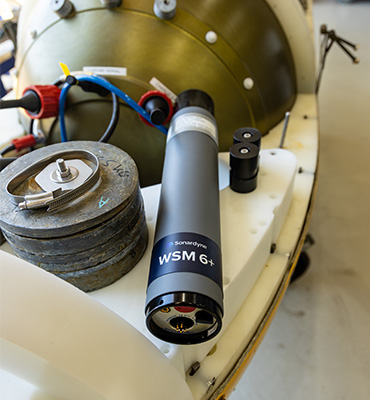


Specifications table
| Feature | Type 8370-1111 | Type 8370-4112 |
|---|---|---|
| Depth rating | 1,000 m | 4,000 m |
| Operational frequency | MF (20–34 kHz) | MF (20–34 kHz) |
| Transceiver beam shape | Omni-Directional | Directional |
| Transmit source level (dB re. 1 µPa @ 1 m) (external power/battery) | 187 dB/ 184 dB |
196 dB/ 193 dB |
| Tone Equivalent Energy (TEE) (external power) | 193 dB | 202 dB |
| Receive Sensitivity (dB re 1 μPa) | <85 dB | <80 dB |
| Power supply | Rechargeable NiMH battery or ext. 24 V via ROV umbilical | Rechargeable NiMH battery or ext. 24 V via ROV umbilical |
| Operating channels | All Sonardyne Wideband HPR 400 Channels | All Sonardyne Wideband HPR 400 Channels |
| Depth sensor | ±0.5% Full Scale (100 Bar) | ±0.5% Full Scale (400 Bar) |
| Operating life (1 s update rate, max. power, Wideband 2 ) |
>6 days | >3 days |
| Update rate (maximum) | >2 Hz | >2 Hz |
| Quiescent life (battery) | >35 Days | >35 Days |
| Connector (5-Way (standard)/ 8-Way (burnwire/motor release)) |
Subconn MCBH5M/ Subconn MCBH8F |
Subconn MCBH5M/ Subconn MCBH8F |
| Operating temperature | -5 to 40ºC | -5 to 40ºC |
| Storage temperature | -20 to 55ºC | -20 to 55ºC |
| Mechanical construction | Anodised aluminium alloy | Anodised aluminium alloy |
| Dimensions (length x diameter) | 420 x 75 mm | 429 x 96.5 mm |
| Weight in air/water | 3.2/1.3 Kg | 5.5/3.2Kg |
| Battery charger | 8370-011-01 | 8370-011-01 |
Frequently asked questions
STP files
Software and firmware
Software and control hardware
Transponders
Datasheets
Manuals and quick start guides
Technical bulletin
Did you know?
WSM 6+ is compatible with our Ranger 2 family of USBL systems: Micro, Mini and Standard
Overview
HPT 3000 is a high performance Wideband 2-enabled Ultra-Short BaseLine (USBL) tracking and telemetry transceiver compatible with our range of 6G transponders.
The transceiver’s acoustic performance is optimised for operations in coastal and near shore where high elevation tracking of targets is often required in low noise environments.
This unit is easy to install on a simple over-the-side pole arrangement enabling a wide range of vessels to take advantage of Mini-Ranger 2 including: anchored barges, small survey craft and uncrewed surface vessels.
HPT 3000 has an internal MTi-30 Xsens sensor which provides pitch, roll and heading data for search and salvage applications which are time critical requiring turn on and track functionality. Shallow water and pipelay from anchor barges also benefit from the internal sensor being calibration free.
The advanced multi-element processing enables transponders to be positioned more precisely, more quickly and more robustly due to improvements in signal processing algorithms. When used as part of a complete Mini-Ranger 2 USBL system, external heading and inertial navigation sensor, class leading performance is achieved.
At a glance
- Use it with Mini-Ranger 2 USBL
- Acoustically optimised for tracking targets in shallow water
- Simple to install on all types of vessel including uncrewed
- Ethernet comms for fast position updates
- Excellent corrosion resistance
‘Discovery Mode’ enables users to automatically detect previously deployed transponders including their configured address and channel, making the system easier to use. The HPT 3000 is a highly capable acoustic USBL tracking transceiver. Its multiple simultaneous channels enable robust tracking of 10 targets.
Manufactured in Aluminium Bronze, the HPT 3000 is intended to be fitted temporarily or permanently to a vessel’s through-hull or over-the-side pole. The full hemispherical coverage optimises performance in shallow water environments boosting transmissions and receive sensitivity in the horizontal axis.
Power and communications are contained in a single cable and because communications transmit from the transceiver to control-room ESH, data rates of up to 100 Mps can be achieved. Ethernet-based communications also enable the unit to interface with your vessel’s existing network for rapid installation.
Mini-Ranger 2 for the next-level USV operations
Read moreL3Harris takes USBL-aided AUV navigation to the next level
Read moreBringing special order accuracy to small diameter AUVs
Read more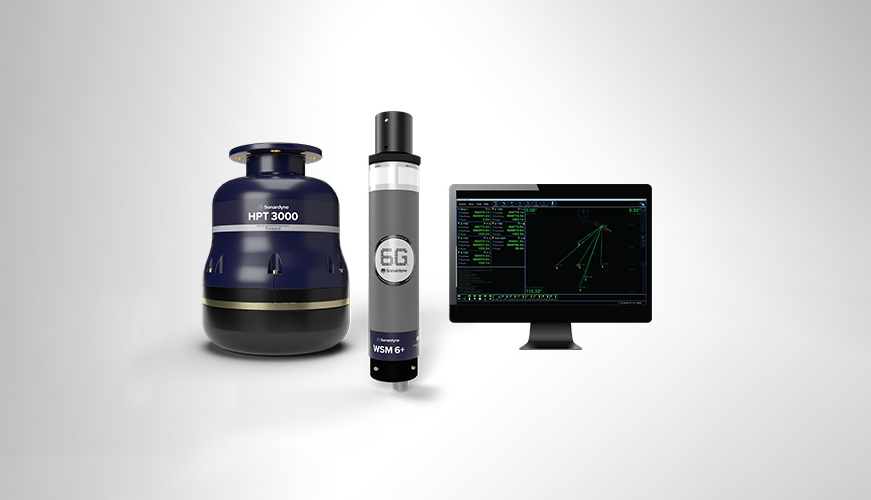
Mini-Ranger 2 USBL
Mini-Ranger 2 is our mid-level USBL target tracking system, perfect for nearshore operations, UXO surveys, search and recovery and structure inspections. With a 995 m operating range, extendable to 4,000 m, it can track up to ten underwater targets simultaneously, including divers, towed instruments, ROVs and AUVs.
Choose to add the Marine Robotics software pack and it will communicate with subsea robotic platforms, sharing positions and exchanging data.
A compact, easily installed system it’s your ideal choice for temporary installation on small survey vessels, as well as USVs.
For the full picture of what your Mini-Ranger 2 USBL is capable of, please visit its dedicated product page.
Specifications table
| Feature | Type 8212 | |
|---|---|---|
| Operational frequency | MF (20–34 kHz) | |
| Transceiver performance | Operating range | Restricted to 995 m with Mini Ranger 2 system (4000 m with extended range version) |
| Acoustic cover | Full 180° | |
| Range precision | Better than 15 mm | |
| Positioning repeatability external MRU | All transceivers tested to better than 0.2% of slant range 1 Drms / 0.14% 1 Sigma | |
| Positioning repeatability internal Xsens pitch and roll | All transceivers tested to better than 1.3% of slant range 1 Drms / 0.9% 1 Sigma | |
| Transmit source level (dB re 1 µPa @ 1 m) | 194 dB | |
| Tone Equivalent Energy (TEE) | 200 dB (3 JA) | |
| Electrical | 48 V dc (±10%), typical 15 W, maximum 120 W | |
| Communication | Ethernet 100 Mbps | |
| Operating temperature | -5 to 40°C | |
| Storage temperature | -20 to 45°C | |
| Mechanical construction | Aluminium bronze | |
| Dimensions (height x diameter) | 310 x 234 mm | |
| Weight in air/water | 19.4/9.5 kg | |
| Note: The absolute accuracy of the system is dependent upon the quality of external attitude and heading sensors, beacon source level, vessel noise, water depth, mechanical rigidity of the transceiver deployment machine, SV knowledge and proper calibration of the total system using CASIUS. |
Frequently asked questions
How to clean a transceiver array face
MF Beacon Positioning for Transition Zone and Ocean Bottom Cable Applications
HPT 2000/3000 Testing
Has anyone ever installed an echosounder and Ranger 2 USBL transceiver directly beside each other? Would this work?
How do USBLs work?
Does the HPT’s main connector need any maintenance?
When to use Depth Aiding
What acoustic address should I use for my USBL transponder
How to interface Ranger 2 into a 3rd party survey system
How can an uncrewed system interact with Ranger 2 software?
STP files
Software and firmware
Software and control hardware
Datasheets
Manuals and quick start guides
Technical bulletin
Did you know?
HPT 3000 is part of our Mini-Ranger 2 USBL system
Overview
Compatt 6+ is used for high precision survey and construction operations in all water depths, including: spool piece metrology, pipeline touchdown monitoring, structure installation and dynamic positioning reference.
Compatt 6+ offers significant time saving with fast update rates (up to 1 Hz LBL tracking), all made possible using the Wideband 3 acoustic telemetry protocols. Support of Wideband 2 ranges maintains backwards compatibility. This makes any system operating with Compatt 6+ significantly easier to operate therefore de-risking operations, reducing vessel time and reducing training requirements for offshore personnel.
At a glance
- Compatible with all 6G LBL, INS and USBL systems
- Wideband 3 enabled
- Versatile, flexible and cost-effective
- Over 3,600 different configurations available
- Choice of depth ratings to 7,000 m
Our Wideband advanced signal processing offers improved acoustic performance in challenging conditions, longer ranges, improved multipath rejection around structures and real-time range diagnostics for quality control. Wideband also reduces the interference to and from adjacent Sonardyne and other acoustic positioning systems.
The integrated communications and navigation technology allows the transponder to be used as a multi-purpose modem, autonomous data logger and navigation reference transponder.
Wideband 3
For the first time, sensor telemetry data (e.g. pressure, depth or temperature) is embedded within ranging data so no more waiting for sensor readings at vital moments.
Compatible
Compatt 6+ transponders are backwards compatible with your existing Compatt 6 inventories so you can mix and match in the field.
Upgradable
We can upgrade your existing Compatt 6 into plus units quickly and cost effectively meaning you can go on to realise the full benefits of Fusion 2.
Overview
Compatt 6+ is used for high precision survey and construction operations in all water depths, including: spool piece metrology, pipeline touchdown monitoring, structure installation and dynamic positioning reference.
Specifications table
| Feature | Type 8300-3111 | Type 8300-3113 | Type 8300-5213 | |
|---|---|---|---|---|
| Depth rating | 3,000 m | 3,000 m | 5,000 m | |
| Operating frequency | MF (20–34 kHz) | MF (20–34 kHz) | MF (20–34 kHz) | |
| Transducer beam shape | Omni-directional | Directional | Directional | |
| Transmit Source level (dB re 1 µPa @ 1 m) | 187–196 dB (4 levels) |
190–202 dB (4 levels) |
190–202 dB (4 levels) |
|
| Tone Equivalent Energy (TEE) | 193–202 dB | 196–208 dB | 196–208 dB | |
| Receive sensitivity (dB re 1 µPa) | 90–120 dB (7 levels) |
80–120 dB (7 levels) |
80–120 dB (7 levels) |
|
| Ranging precision | Better than 15 mm | Better than 15 mm | Better than 15 mm | |
| Number of unique Wideband 2 addresses | >300 | >300 | >300 | |
| Battery life (listening) | Alkaline | 833 days | 833 days | 833 days |
| Lithium | 1,390 days | 1,390 days | 1,390 days | |
| External power supply | 24 V | 24 V | 24 V | |
| Safe working load (4:1) | 250 kg | 250 kg | 250 kg | |
| Operating temperature | -5 to 40°C | -5 to 40°C | -5 to 40°C | |
| Storage temperature | -20 to 55°C | -20 to 55°C | -20 to 55°C | |
| Dimensions (maximum) (length x diameter) |
With sensor guard | 1,034 x 200 mm | 1,018 x 200 mm | 1,018 x 200 mm |
| Without sensor guard | 1,034 x 178 mm | n/a | n/a | |
| Weight in air/water | 23.8/11.8 kg | 27.0/14.0 kg | 29.0/15.0 kg | |
| Endcap sensors and options | ||||
| Temperature (±0.1°C) | Standard | Standard | Standard | |
| Tilt switch (±30–45°) | Standard | Standard | Standard | |
| Strain gauge pressure sensor (±0.1%) | Standard | Standard | Standard | |
| High precision strain gauge (±0.01%) Presens or Keller |
Optional | Optional | Optional | |
| Paroscientific digiQuartz pressure sensor 1,350 m, 2,000 m, 4,130 m, 6,800 m (±0.01%) |
Optional | Optional | Optional | |
| Inclinometer (tilt sensor) range ±90°, accuracy: ±1° |
Standard | Standard | Standard | |
| High accuracy inclinometer
range: ±90°, accuracy: ±0.05° over 0 – ±15°; ±0.2° over 0 – ±45° |
Optional | Optional | Optional | |
| Sound velocity sensor ±0.02 m/s accuracy under calibration conditions | Optional | Optional | Optional | |
| Release mechanism | Standard | Standard | Standard | |
| Power for external sensors | Standard | Standard | Standard | |
| Gyro input | Standard | Standard | Standard |
Frequently asked questions
Compatt 6 and 6+ Deployment Tests
Frequency management is obsolete. Here’s why.
6G Terminal Lite Range Test
When to use a float, when to use a stand?
How can I get the best performance from my long layback tracking operations?
How can I deploy my Compatt 6+ using iWand?
How to correctly set a Compatt 6+ release mechanism
Does Compatt 6+ have modem capabilities?
How often do endcap sensors need calibrating to keep them in spec?
Is it possible to position Compatt 6+s independently within the same array and send each positioning out of Fusion to our navigation software?
Will Compatt 6+ work with Ranger 2 and Marksman?
I want to buy standard red Compatt 6, are they still available for sale?
Can Compatt 6+ be used in the same LBL array as standard Compatt 6?
What is the difference between Compatt 6 and Compatt 6+?
If I’m using Fusion 2, can I choose to use Wideband 2 or Wideband 3 telemetry?
Can ROVNav 6+ be used with standard Compatt 6s?
Will my ROVNav 6 work with Compatt 6+?
Do I need to upgrade to Compatt 6+ and ROVNav 6+?
How to QC a Sound Velocity (SV) in Fusion 2
How far can my Compatt 6+ be above the seabed?
How to replace a battery in Compatt 6 and 6+ family of transponders
How to plan my sparse LBL array (guidance note)
How do I calibrate my sparse LBL array?
How do I set up structure deflection monitoring (SDM) in Fusion 2?
Can I use Compatt 6+ Multiuser in Fusion 2?
How do I perform a SLAM calibration in Fusion 2?
How do I set up sound speed collection and pressure to depth conversion in Fusion 2?
Software and firmware
Software and control hardware
Transponders
Manuals and quick start guides
Did you know?
Compatt 6+ uses Wideband 3 technology
Overview
MRT is supplied as part of our Micro-Ranger 2 USBL system, a complete one-box underwater diver, ROV, AUV and equipment tracking solution. Everything you need, including two transponders, is supplied in a battery-powered IP-67 rated carry case for portable, go-anywhere marine operations.
MRT is supplied with a moulded 10 m underwater cable that is connected up to your Micro-Ranger 2 command case. The cable provides both power and comms to the MRT.
At a glance
- Easy to deploy off a pontoon or RHIB
- Optimised for high elevation tracking in shallow water
- Internal magnetic compass for instantaneous and calibration free motion compensation
- Built in health checks including array and electronics diagnostics
- Supplied with 10 m of deck cable
Deployment is as simple as it gets. Off a pontoon, over the side of your RHIB or even fixed to a USV. It can be suspended using its cable or on a simple pole arrangement. We even offer a lightweight carbon fibre pole with fixation clamp and a top bracket to mount the system’s included GNSS antenna.
MRT uses an integral AHRS sensor which provides pitch, roll and heading data that automatically compensates for the dynamic motion of the vessel, removing the need for an external sensor and pre-use calibration. It’s multi-element processing enables transponders to be accurately positioned at ranges of 995 metres.
Specifications table
| Feature | Type 8243 |
|---|---|
| Operational Frequency | MF (20–34 kHz) |
| Operating Range | Up to 995 m |
| Depth Rating | 25 m |
| Acoustic Coverage | Greater than 200° |
| Range Accuracy | Better than 15 mm |
| Angular Accuracy | ±3° |
| Transmit Source Level (dB re 1 µPa @ 1 m) | 184 dB |
| Electrical | 48 V dc (±10%) typical 1.5 W, maximum 25.5 W |
| Communication | Ethernet 100 Mbps |
| Operating Temperature | -5 to 40°C |
| Storage Temperature | -20 to 55°C |
| Mechanical Construction | Stainless steel 316, PVC and polyurethane |
| Dimensions (Height x Diameter) | 177 x 106 mm (excluding connector) |
| Weight in Air/Water | 1.84/0.99 kg |
Frequently asked questions
STP files
Software and control hardware
Datasheets
Manuals and quick start guides
Did you know?
MRT is part of Micro-Ranger 2 USBL with an operating range of up to 995 m
Reassuringly reliable Ranger 2
Ranger 2 is more than just an acoustic tracking and positioning system. It goes way beyond tracking; it can be part of a dynamic positioning system, it supports robust two-way data communication with a range of seafloor sensors to collect data, it can support AUV command and control and will even release seabed moorings.
Ranger 2 can even be run from an uncrewed surface vehicle (USV) enabling truly remote, autonomous operations. Whether your mission involves seabed surveys, offshore energy site inspections or commanding a fleet of AUV’s, Ranger 2 can help you expand them over the horizon and to the edges of your imagination.
It comes with an impressive list of standard features, our award-winning 6G (sixth generation) acoustic hardware platform and Sonardyne Wideband 2 digital signal architecture. The flexibility of the Ranger 2 family is further extended by our range of 6G transponders to support a wide variety of applications.
Why should you invest?
Our Ranger 2 family gives you the versatility you need, at the investment level you can afford, to get your project completed quickly and efficiently. It’s engineered like no other USBL on the market. Adaptable, scalable and always compact, there is a Ranger 2 USBL to suit any size vessel or project. As your needs grow, bolt-on software packs unlock additional capability and protect your investment. Whichever size suits you best, they will always be compatible with our full range of 6G transponders and many other vessel systems.
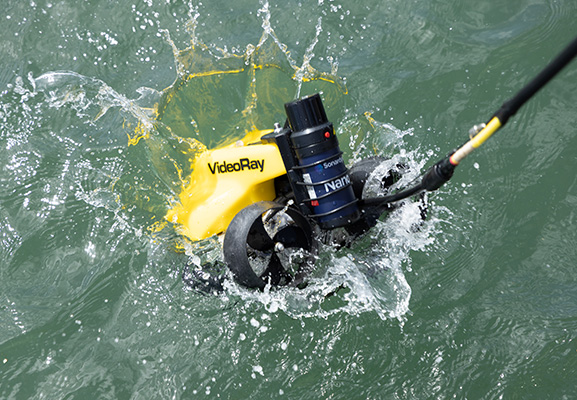
Micro-Ranger 2 USBL
The ‘baby’ of the Ranger 2 family and the ideal entry-level USBL, Micro-Ranger 2’s compact size contradicts its impressive performance. It may be our smallest underwater tracking system to date, but it will have a big impact on your operations.
Never used a USBL system before? No problem. Micro-Ranger 2 is simple to setup and use.
Need to know where your targets are? Micro-Ranger 2 has them covered. Precision, ease of use and versatility come as standard. It’s built around the same market-leading hardware and digital acoustic technology you’ll find in our family of deep water USBL systems, but for significantly less cost and complexity.
For the full picture of what your Micro-Ranger 2 USBL is capable of, please visit its dedicated product page.
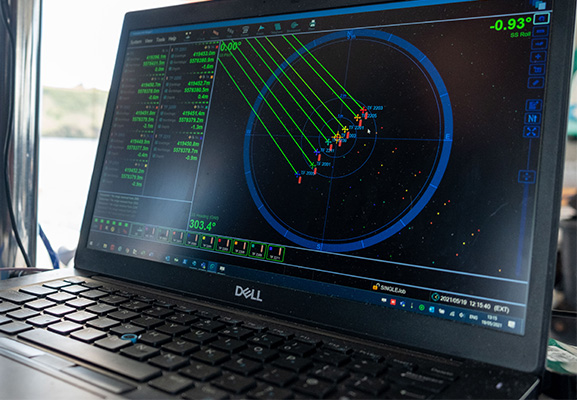
Mini-Ranger 2 USBL
Mini-Ranger 2 is our mid-level USBL target tracking system, perfect for nearshore operations; UXO surveys, search and recovery and structure inspections. With a 995 m operating range, extendable to 4,000 m, it can track up to ten underwater targets simultaneously, including divers, towed instruments, ROVs and AUVs.
Choose to add the Marine Robotics software pack and it will communicate with subsea robotic platforms, sharing positions and exchanging data.
A compact, easily installed, system it’s your ideal choice for temporary installation on small survey vessels, as well as USVs.
For the full picture of what your Mini-Ranger 2 USBL is capable of, please visit its dedicated product page.

Ranger 2 USBL
Ranger 2 is the largest USBL in the family and the most powerful USBL on the market. Able to simultaneously track up to 99 targets with up to 11,000 m range, it is anything but standard.
Recommended for installation on large vessels and USVs, Ranger 2 incorporates over 30 years of our USBL innovation and know-how. It has a global vessel track record and is used for offshore energy, research, cable-lay, salvage and naval operations, to name but a few.
Sharing a common platform with other Sonardyne USBLs, Ranger 2 supports all industry standard DP telegrams and acoustically aided inertial navigation systems (INS).
For the full picture of what your Ranger 2 USBL is capable of, please visit its dedicated product page.
6G
Our 6th generation (6G) technology provides faster, secure and robust data communications from seabed to surface . This gives you speedier updates on the location of your assets and access to your vital data.
Wideband
Our wideband technology enables digital high-throughput data, range resolution and accuracy with low latency. Teamed with our 6G it gives you fast, reliable, accurate data over greater distances.
Robotics
Uncrewed, autonomous surface and underwater vehicles are increasingly used for coastal, deep sea and over-the-horizon operations, reducing costs, risks and carbon footprint. Thats why we have a dedicated “bolt on” pack for our Ranger 2 to enhance your robotics operations.
Dynamic positioning
We’ve been engineering high integrity position reference systems for dynamically positioned vessels since the early 1990s. Our USBL, LUSBL and SPRINT- INS products provide dynamic positioning solutions for a range of vessels and environments.
